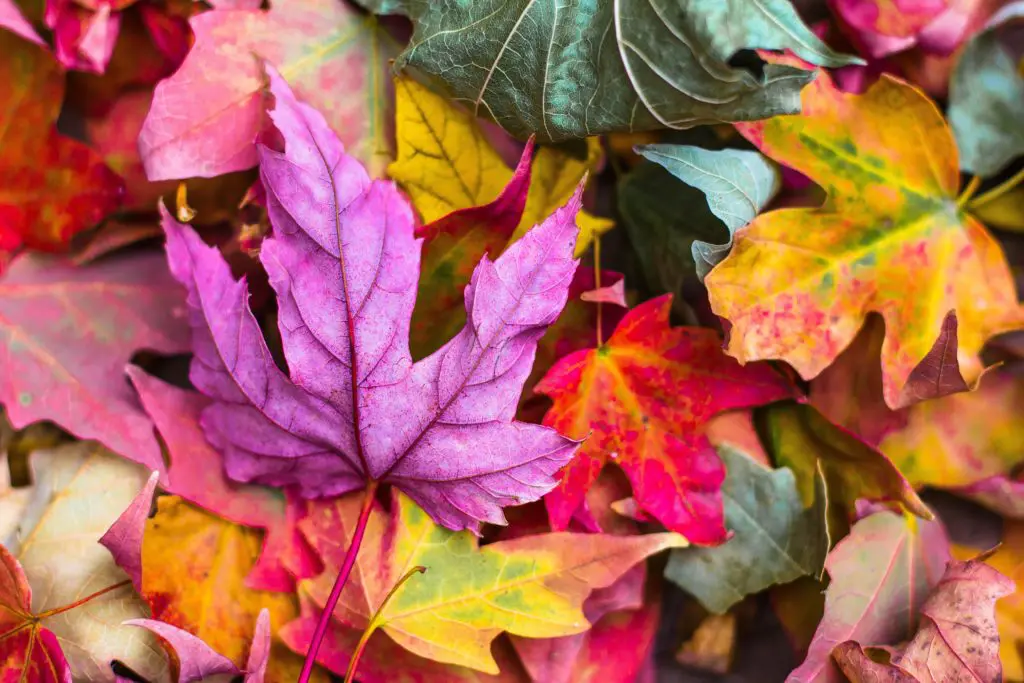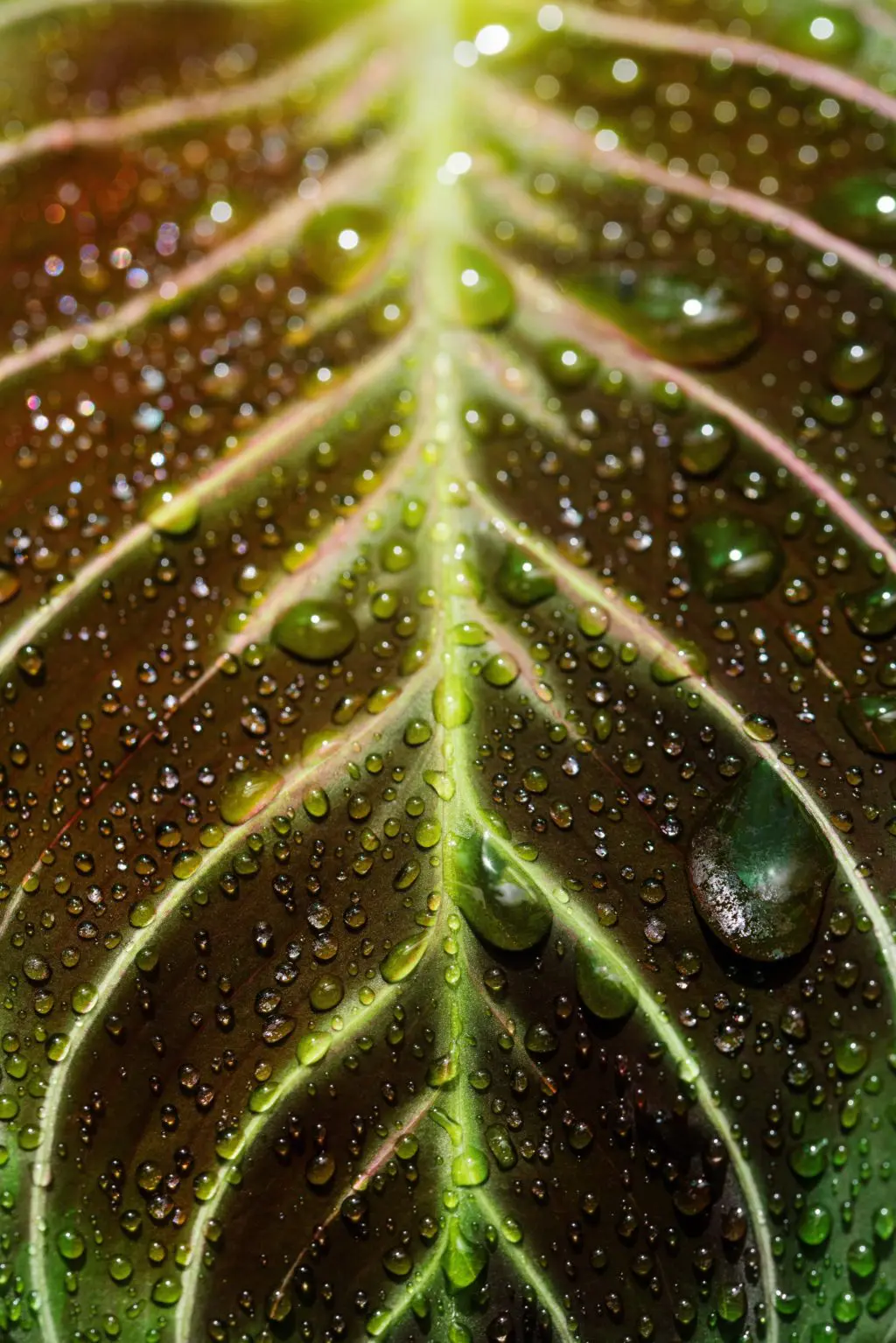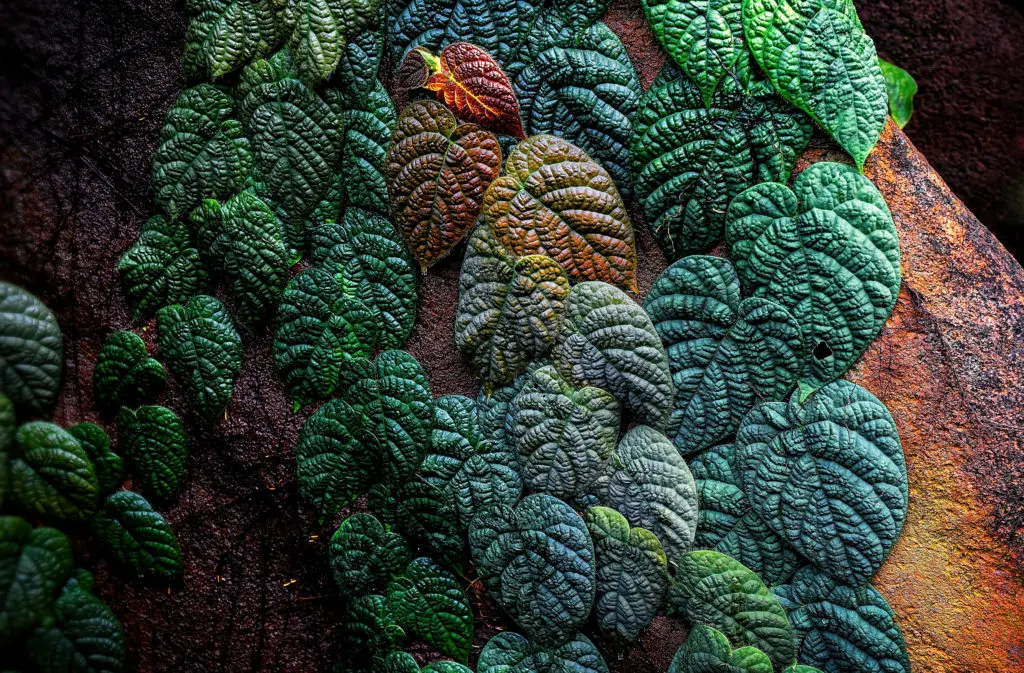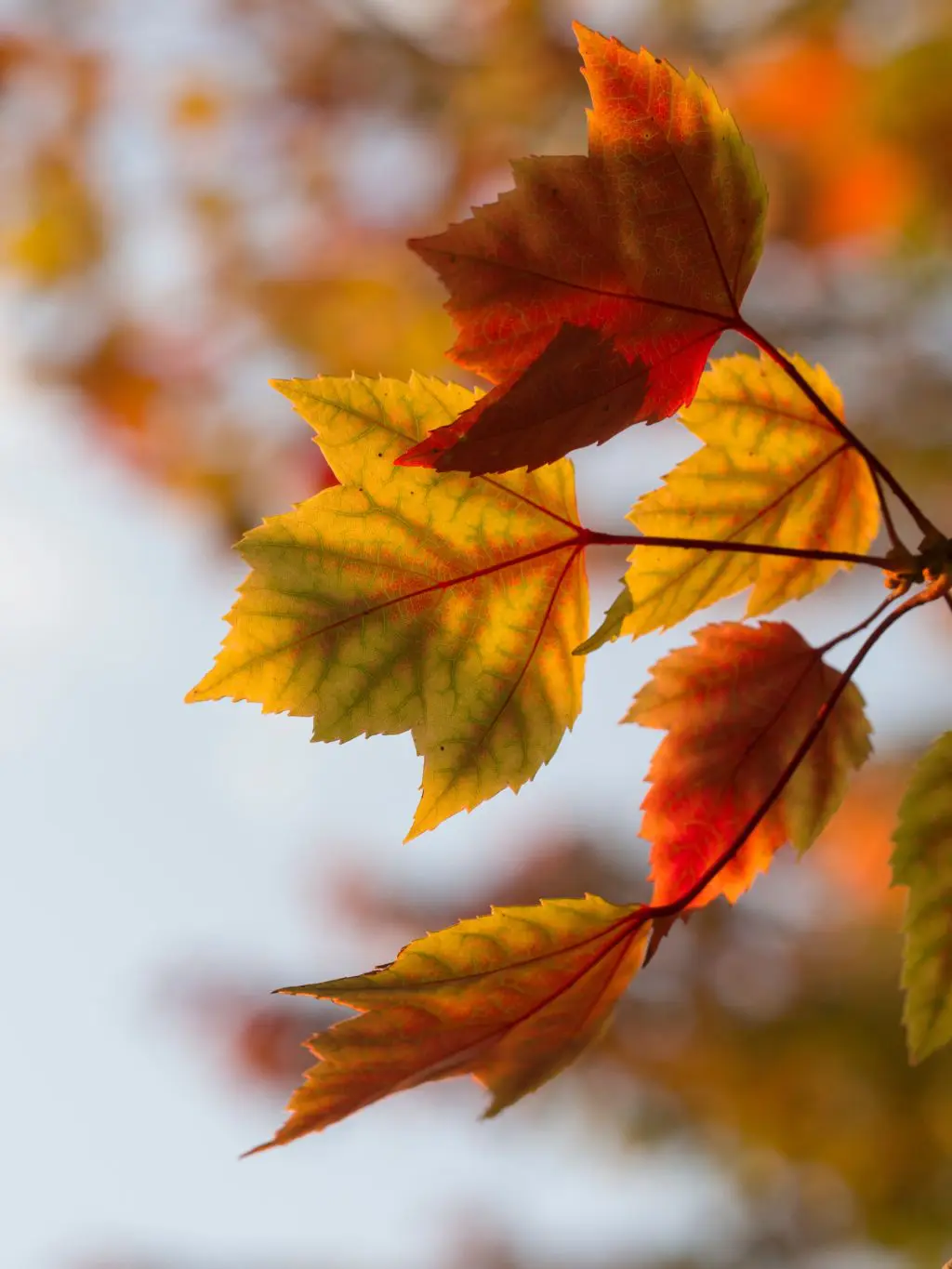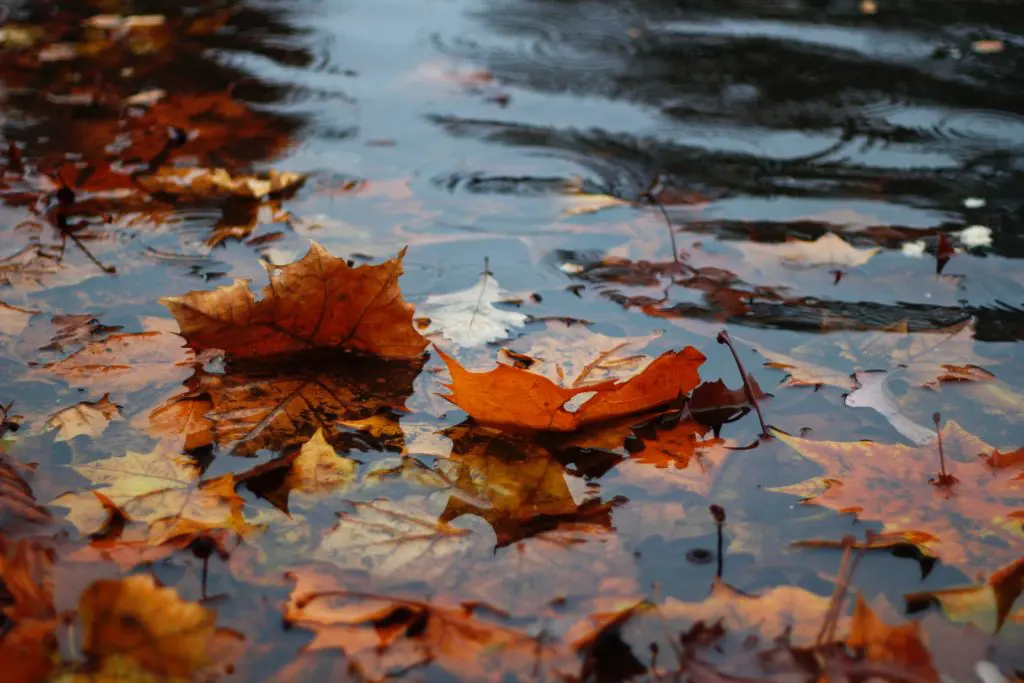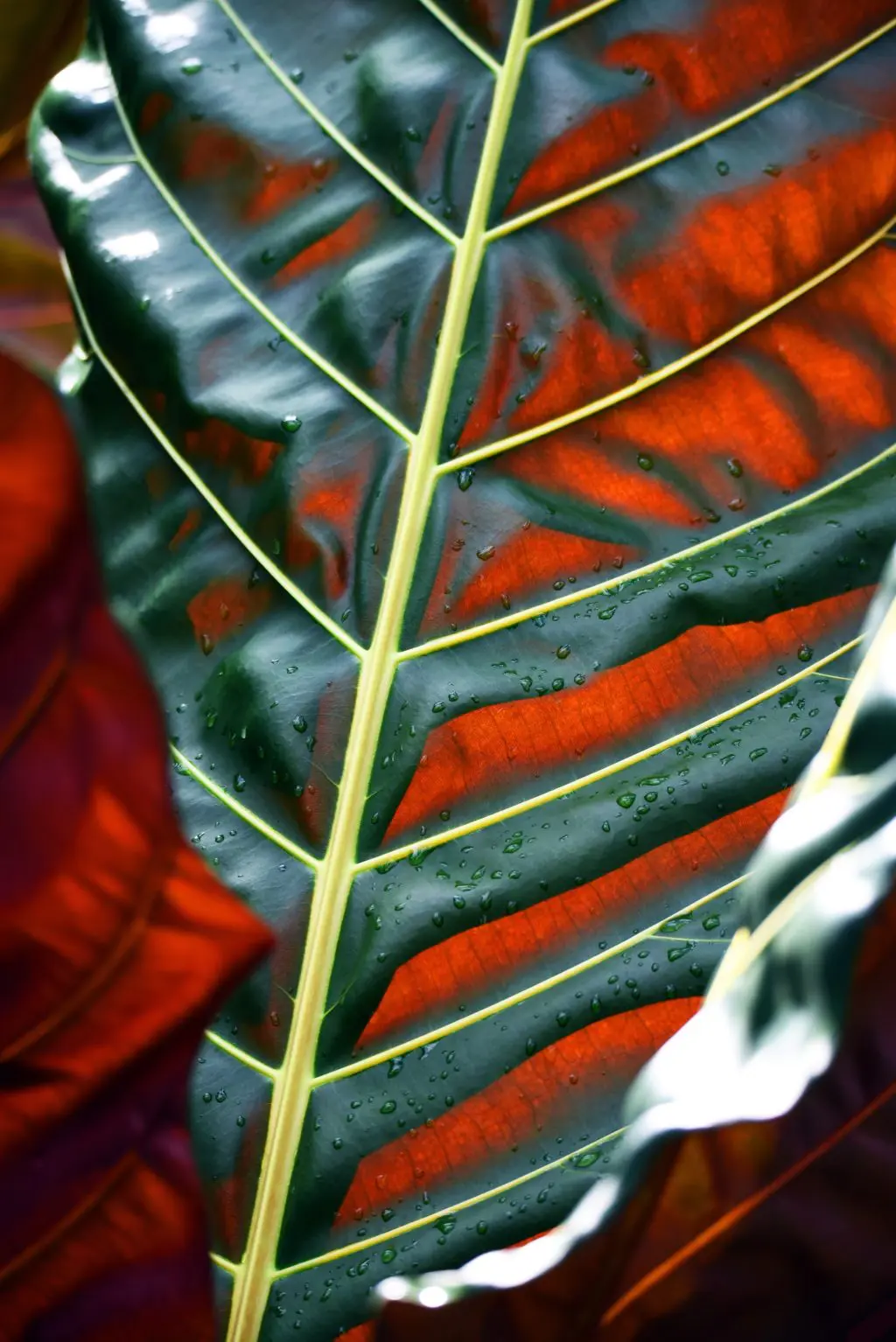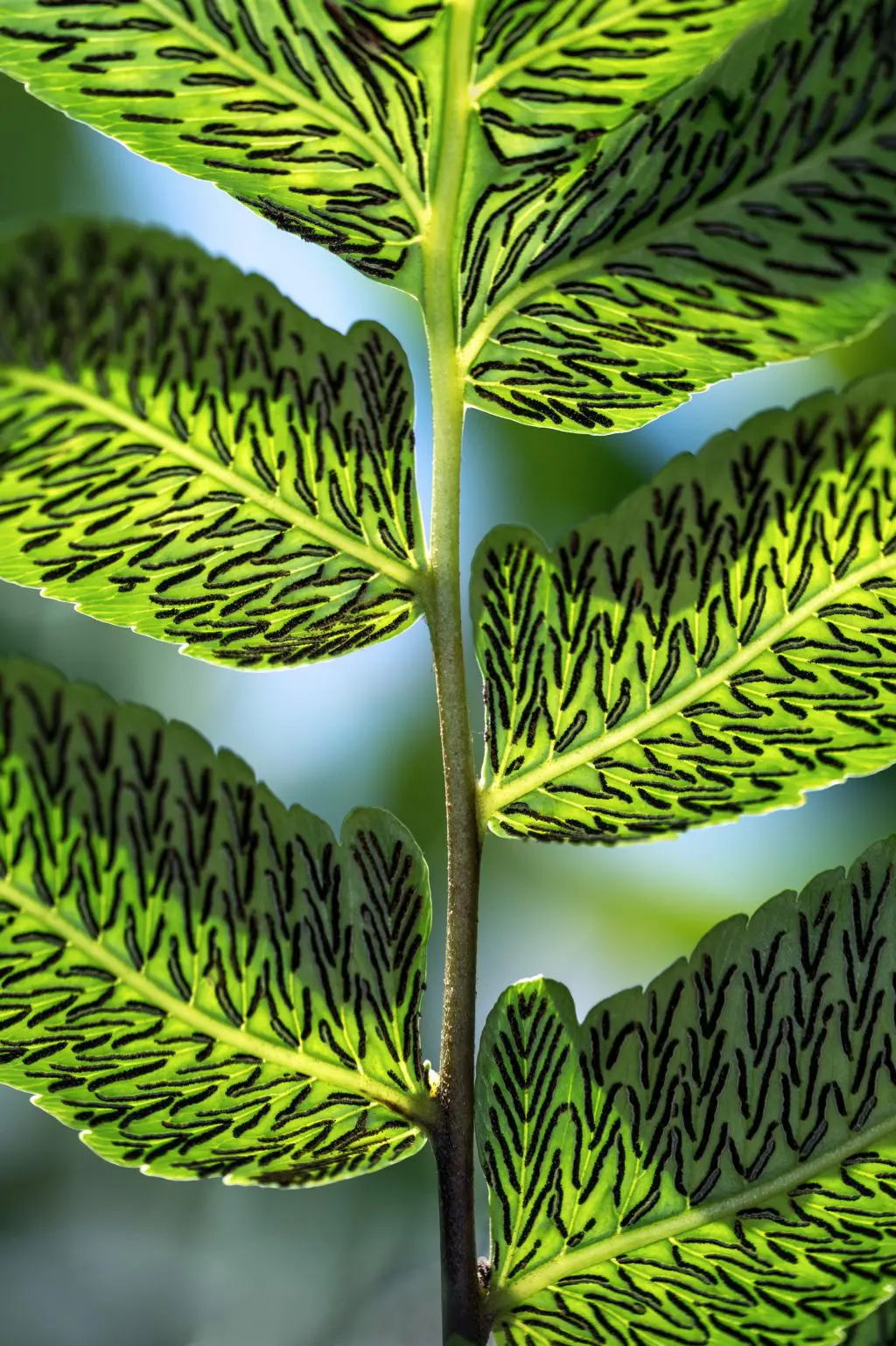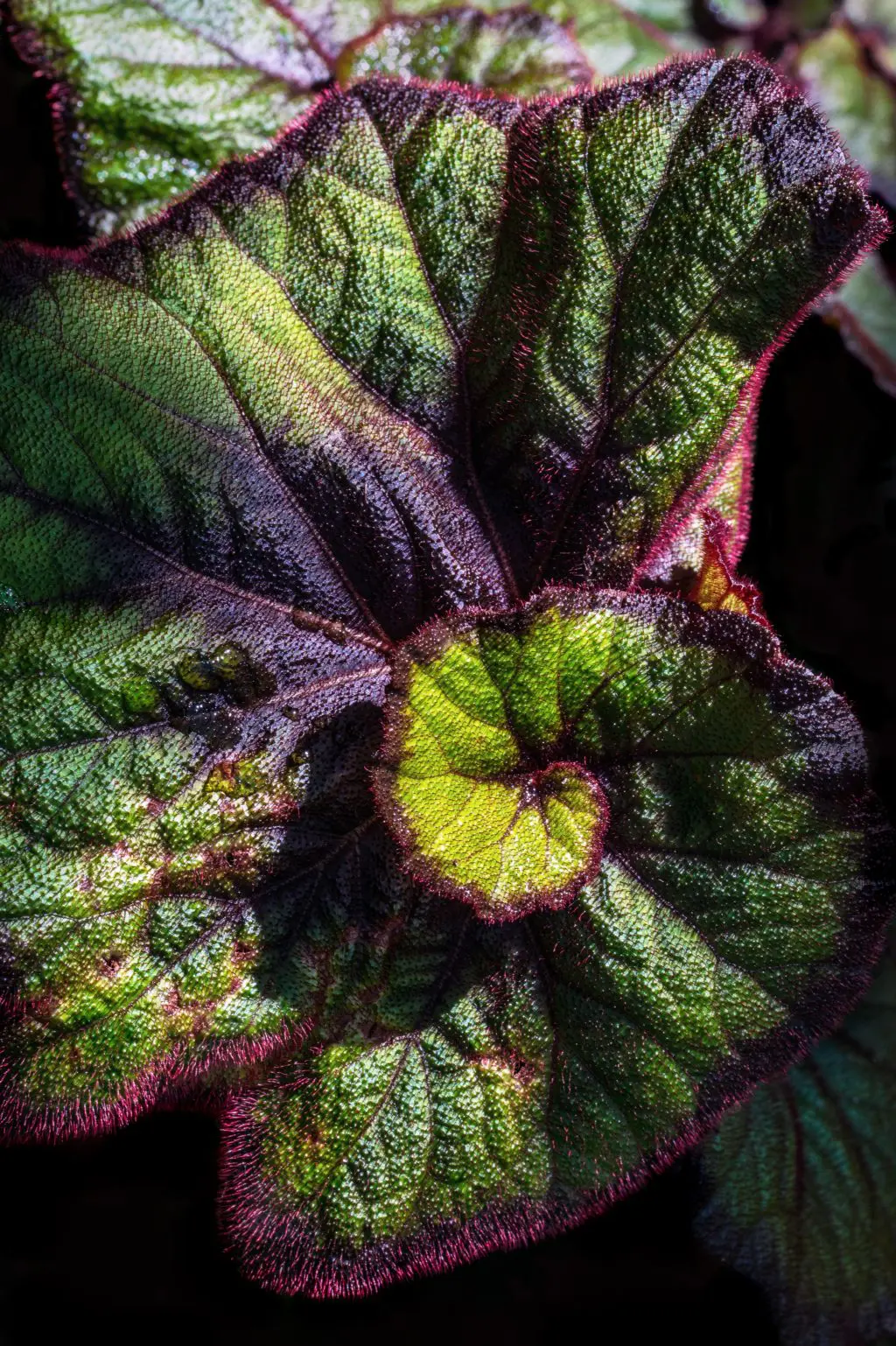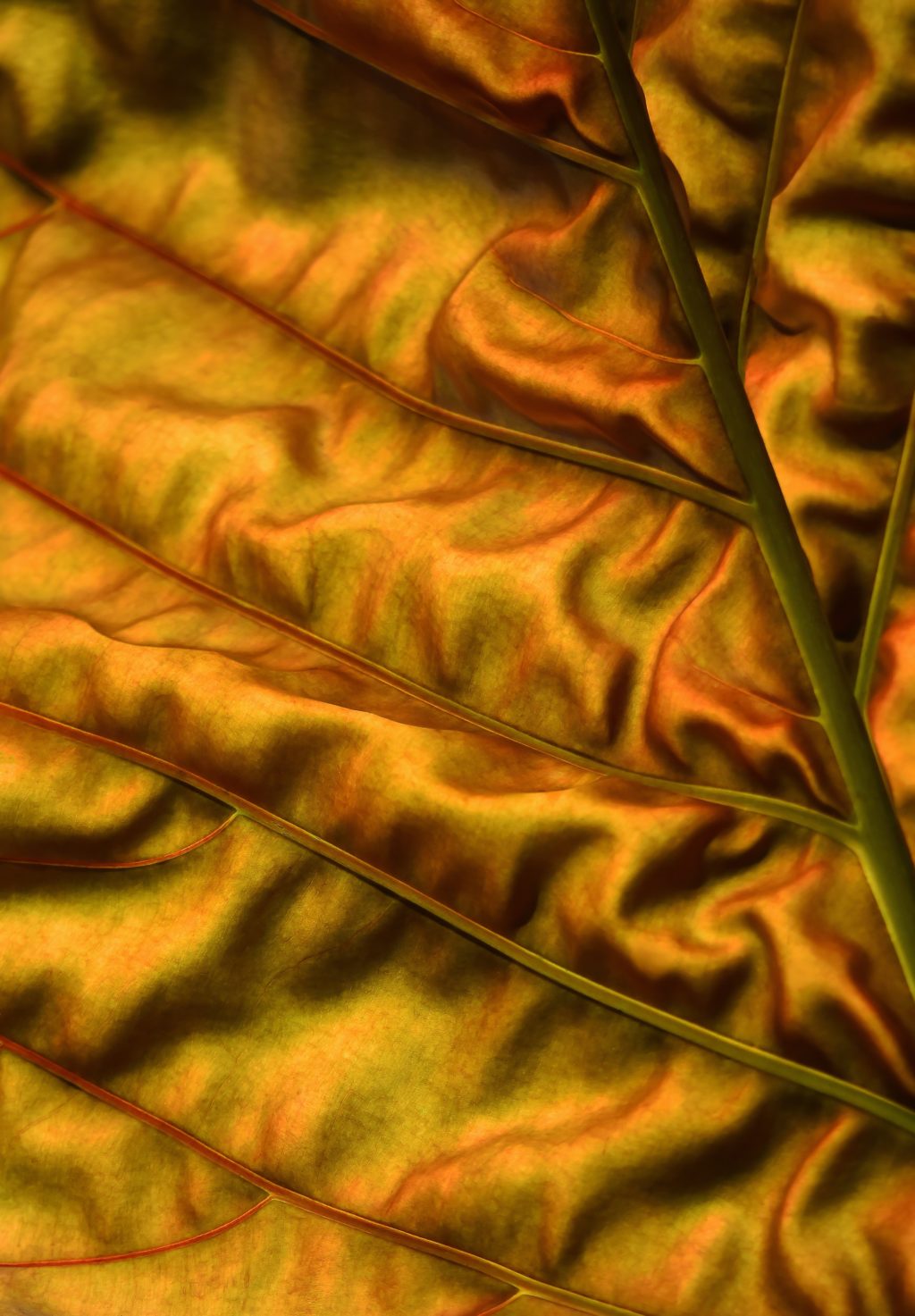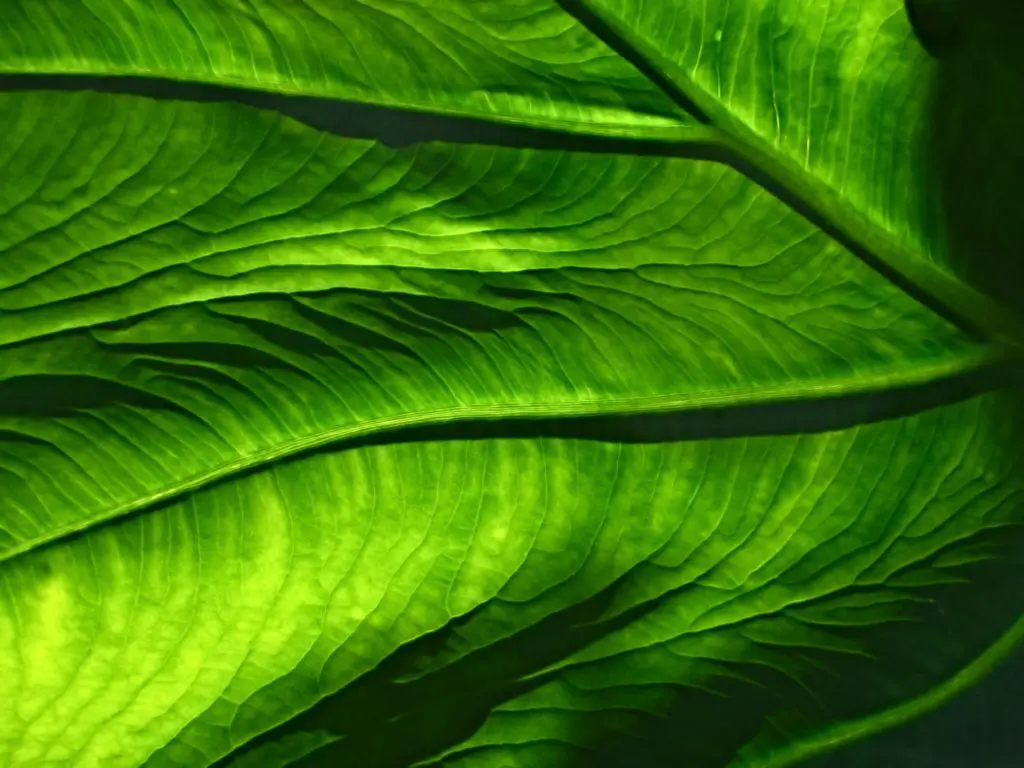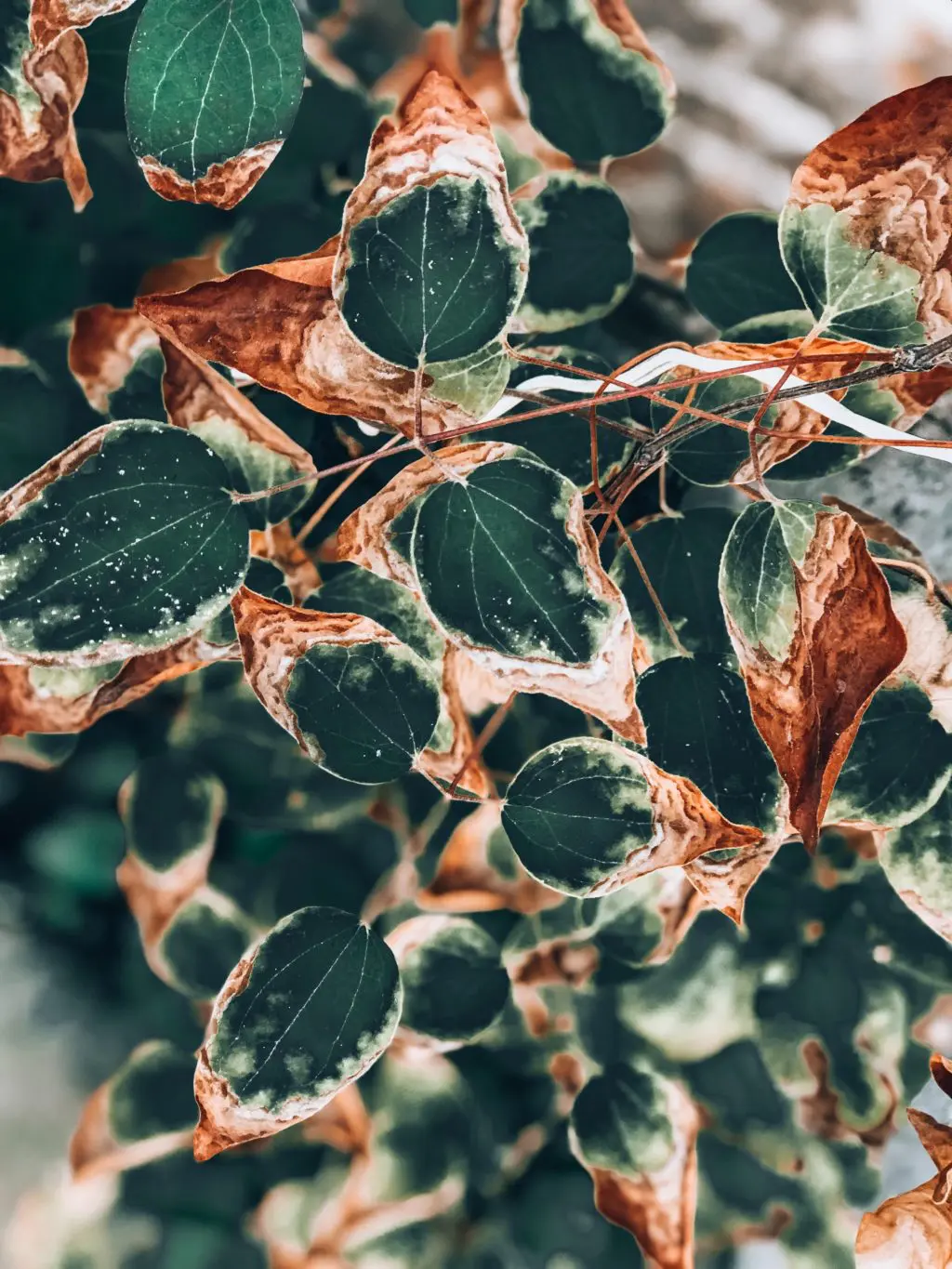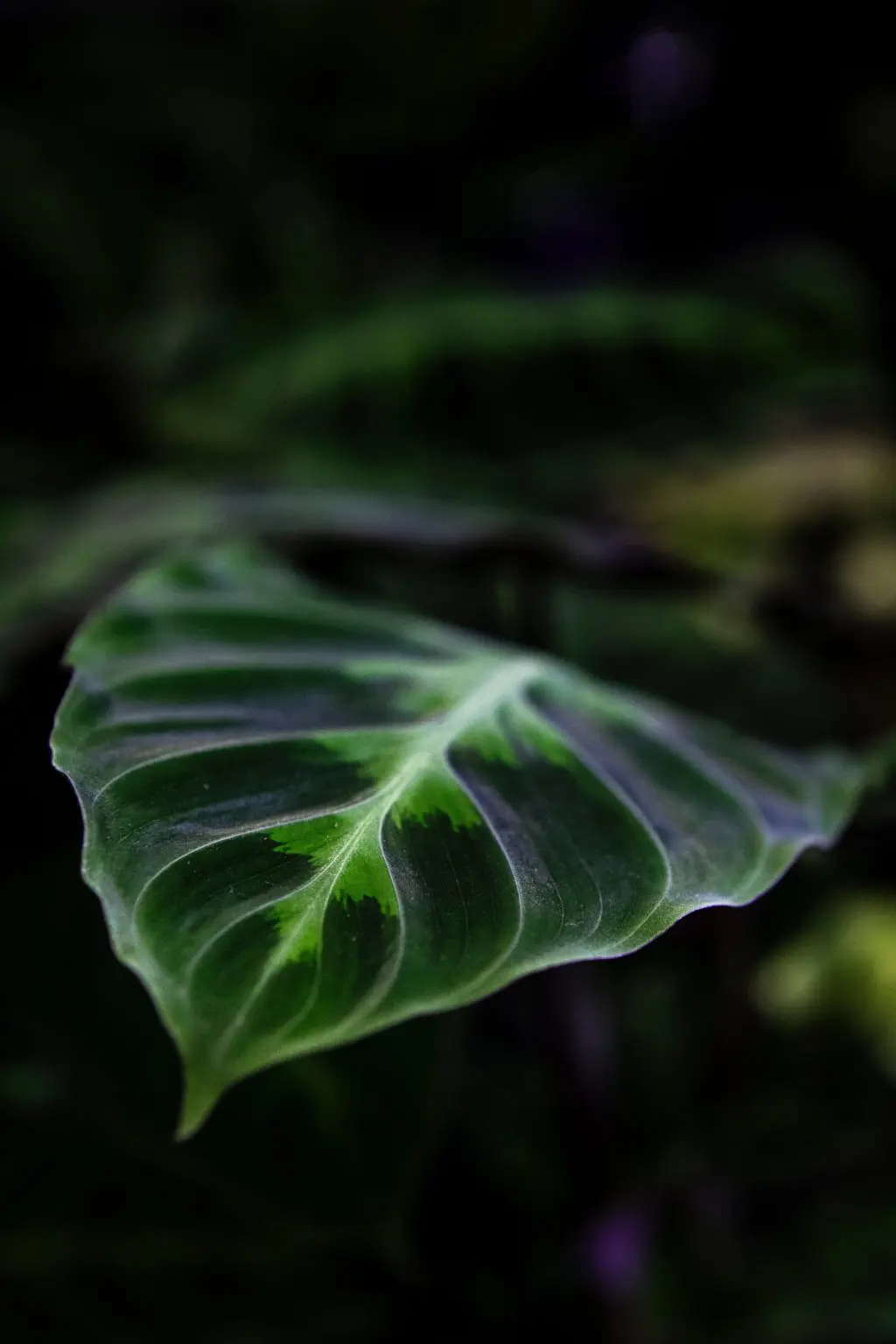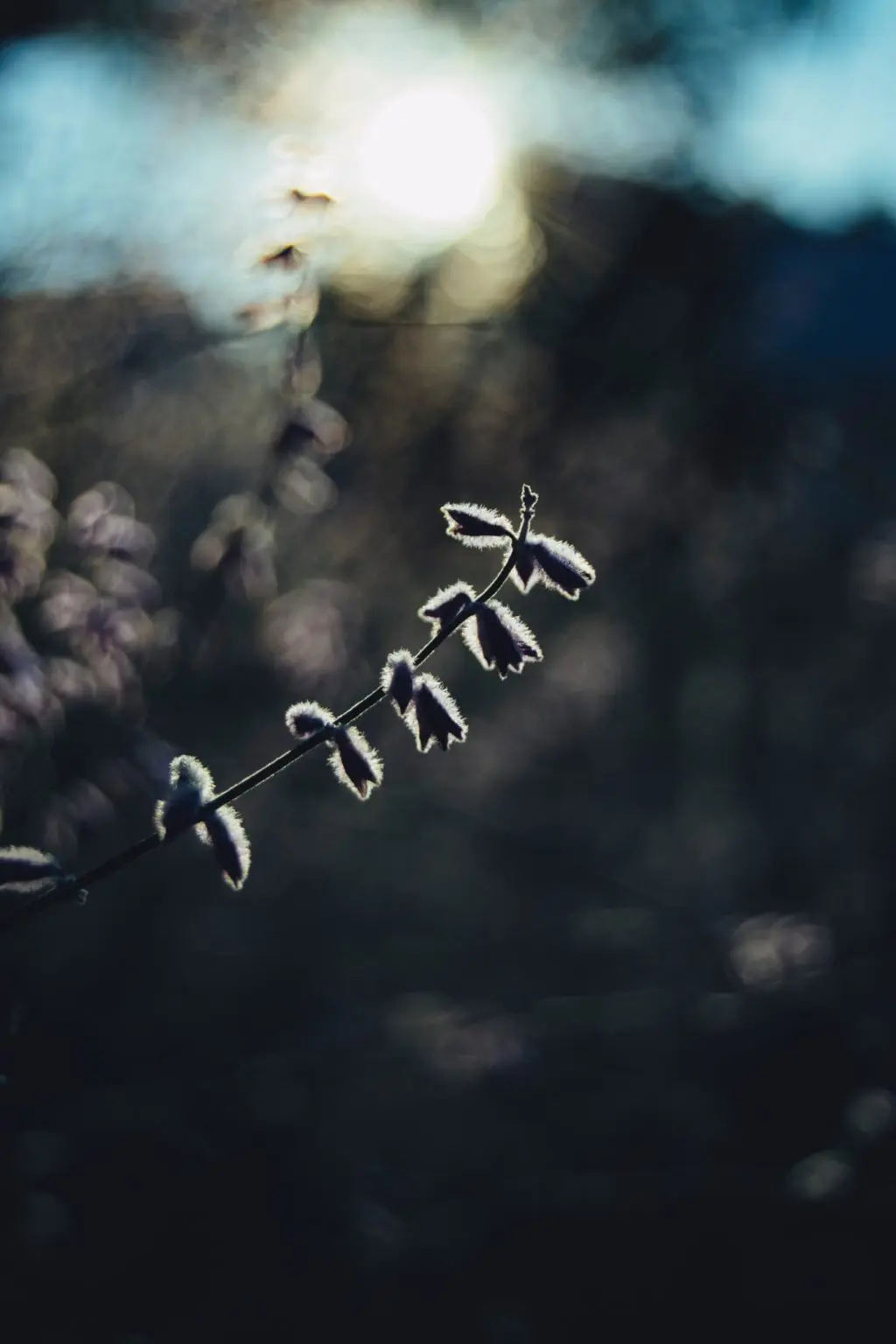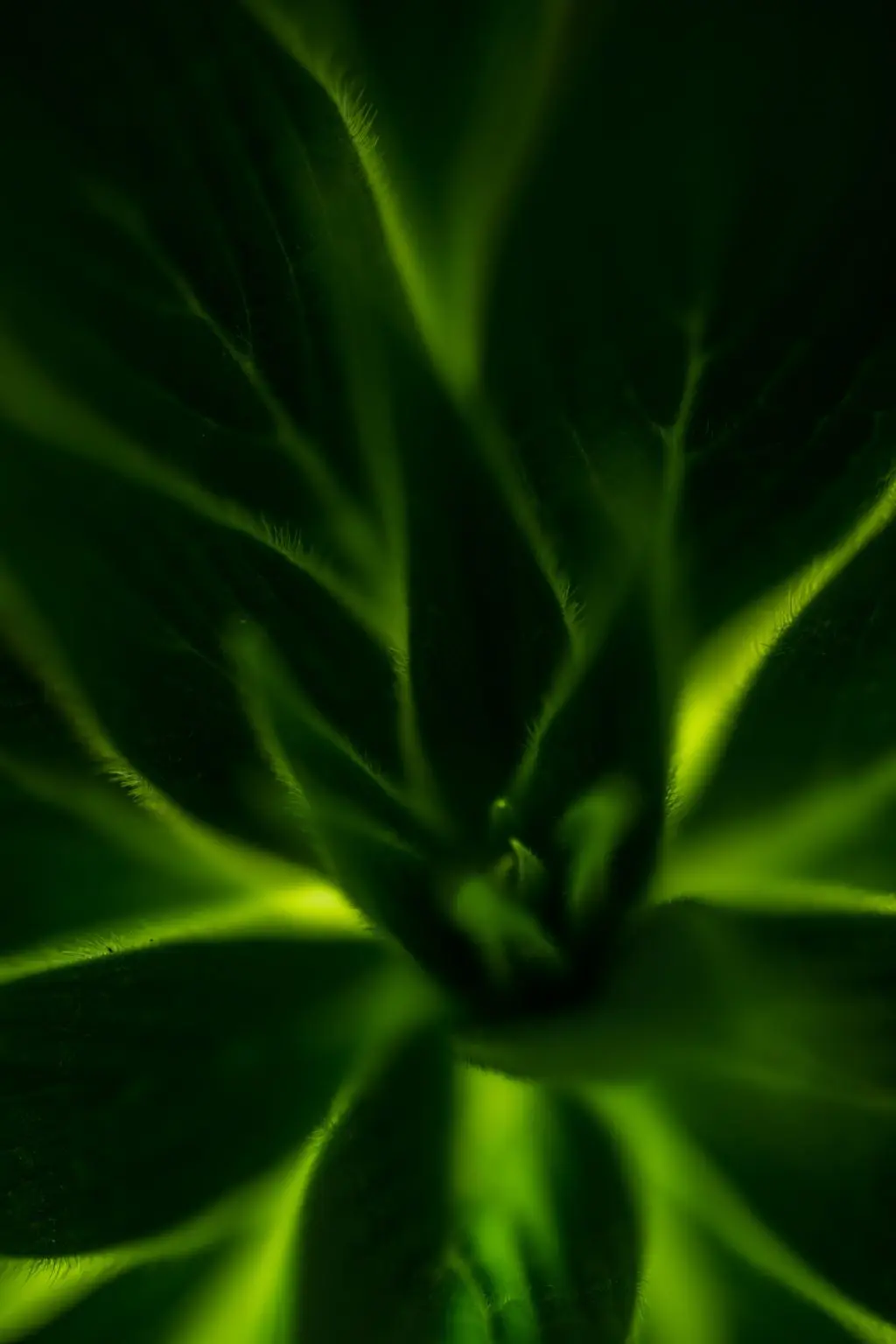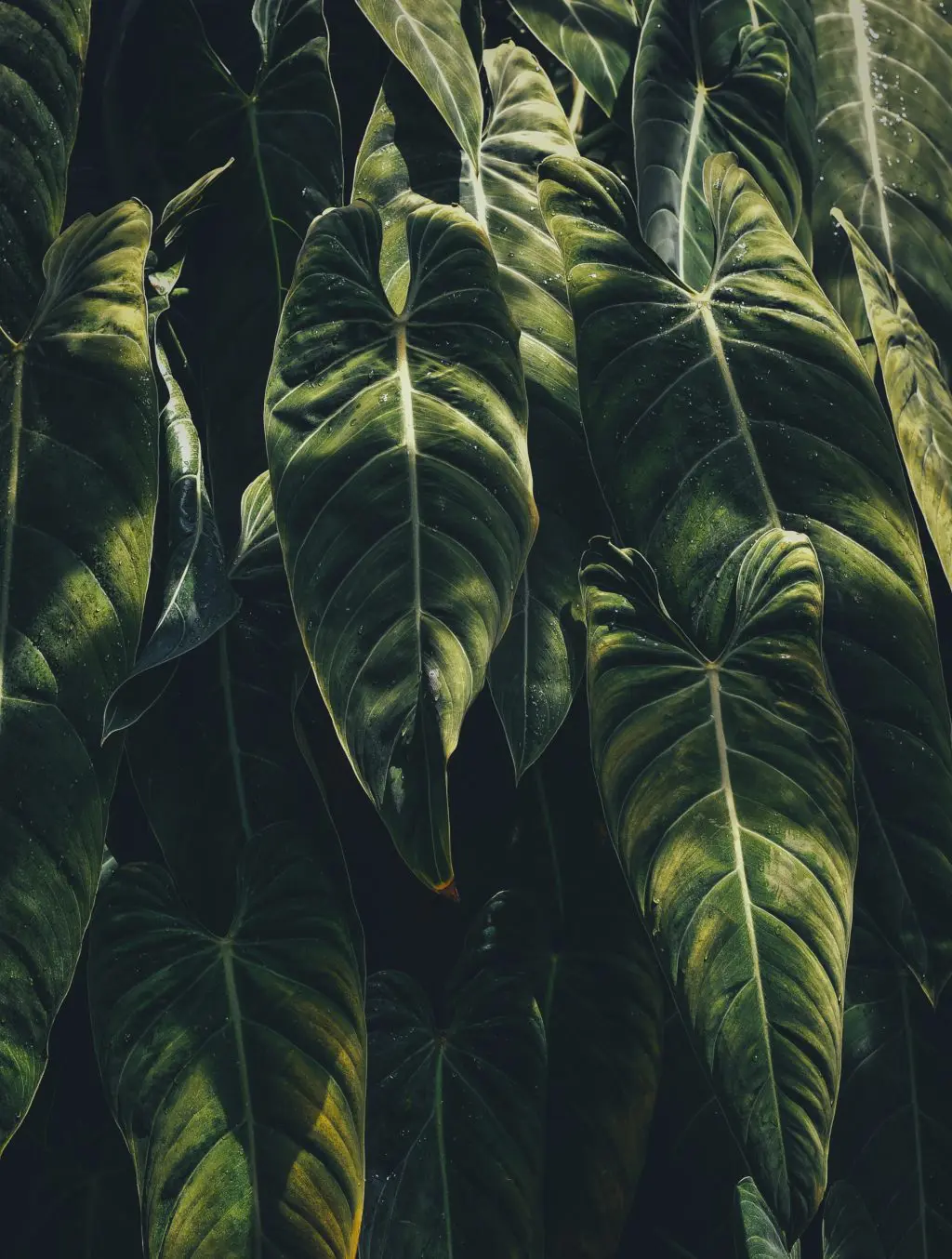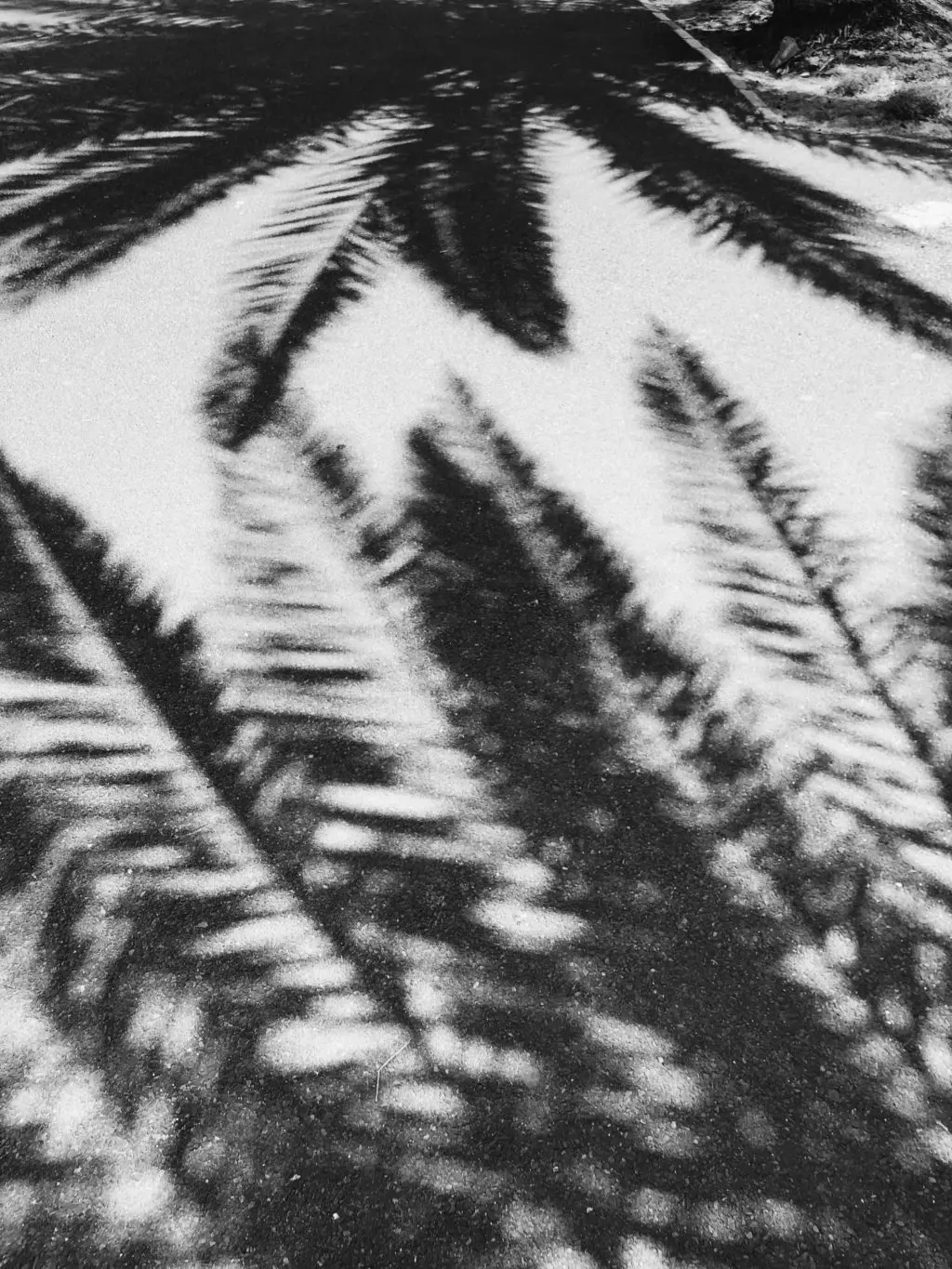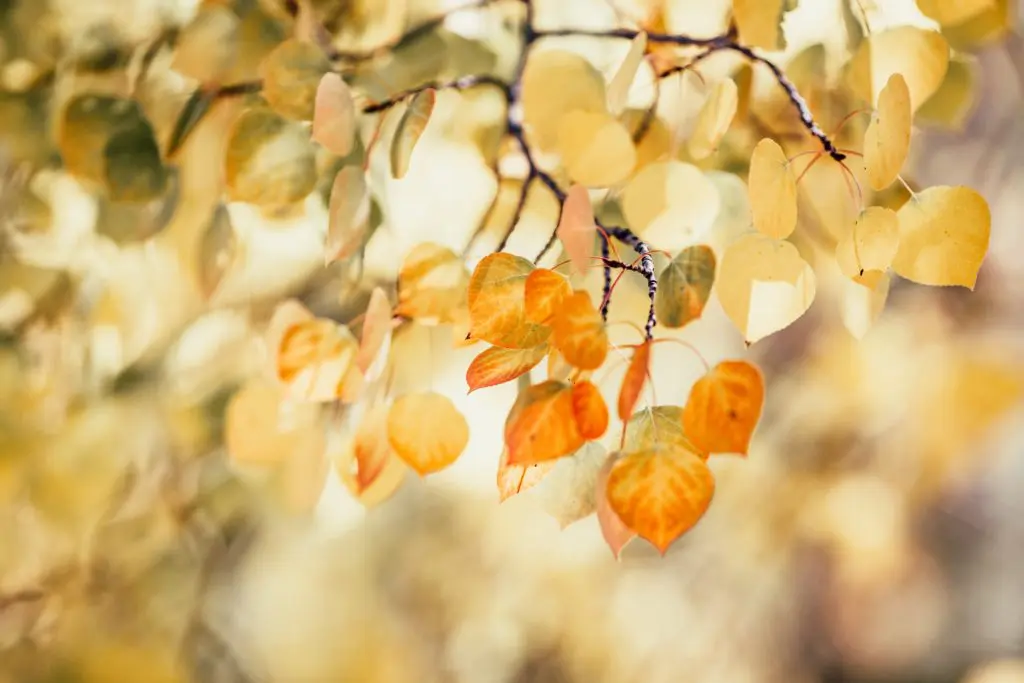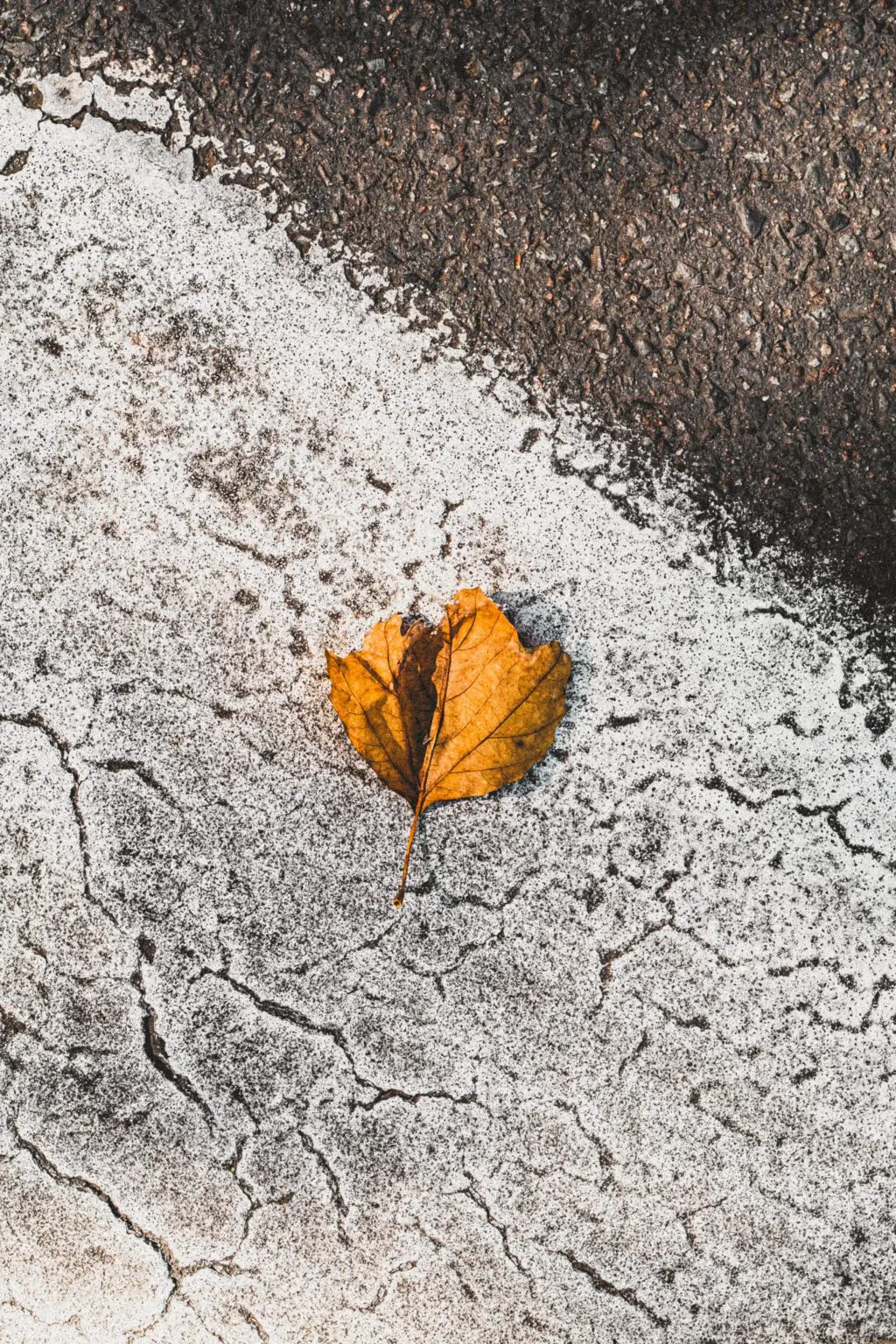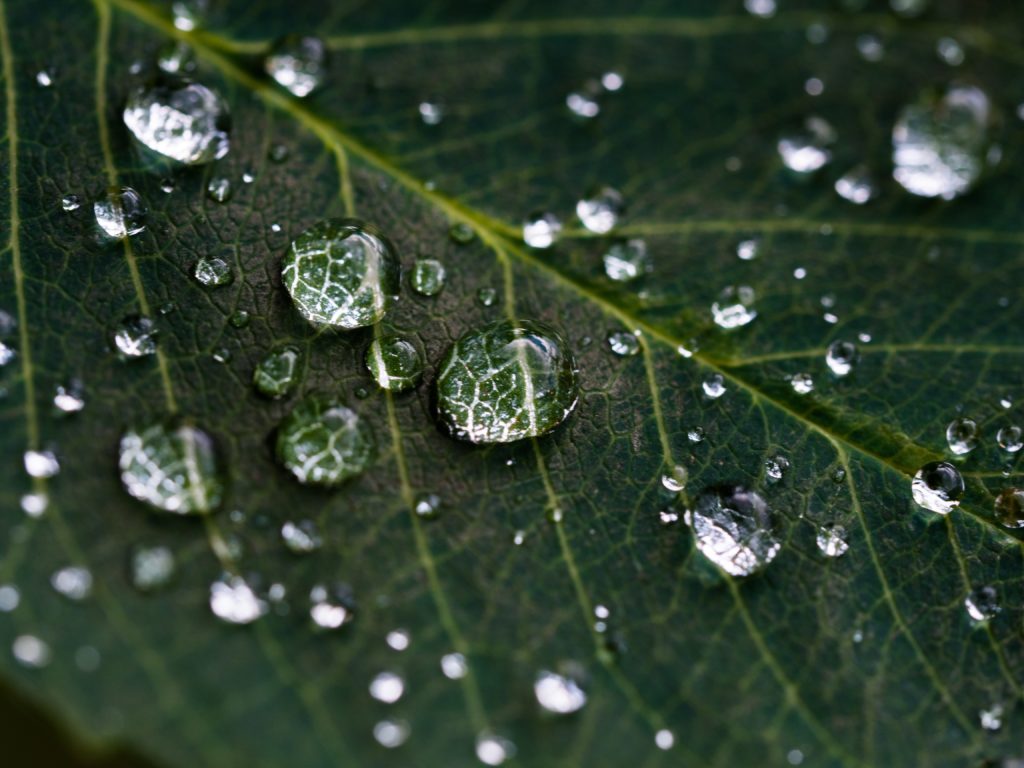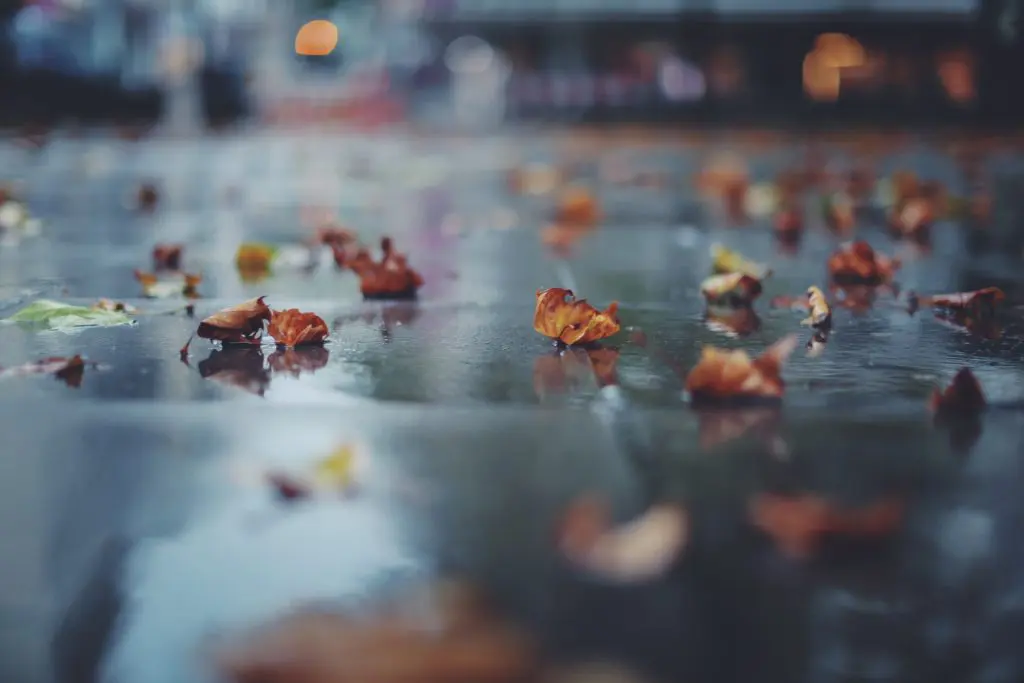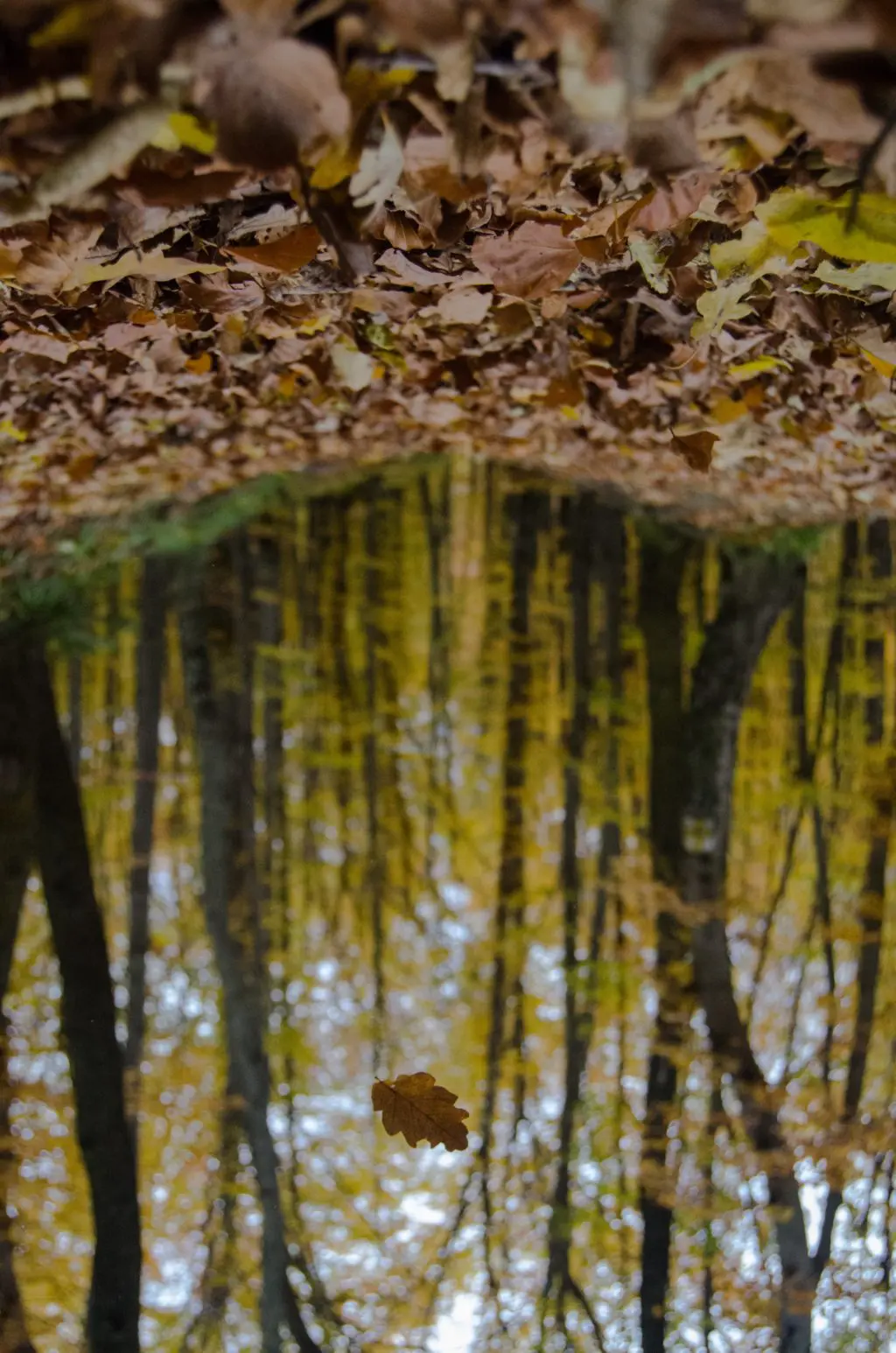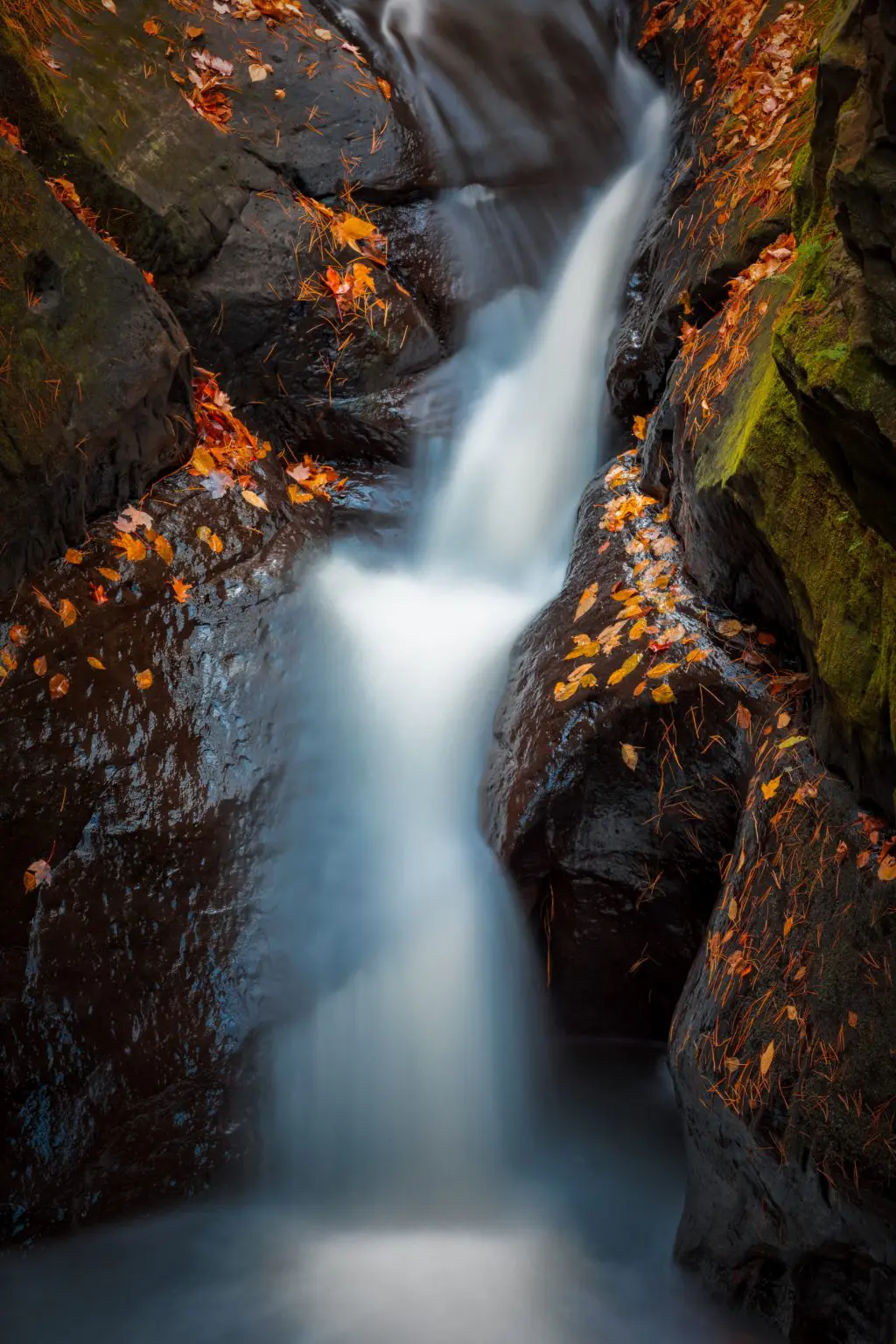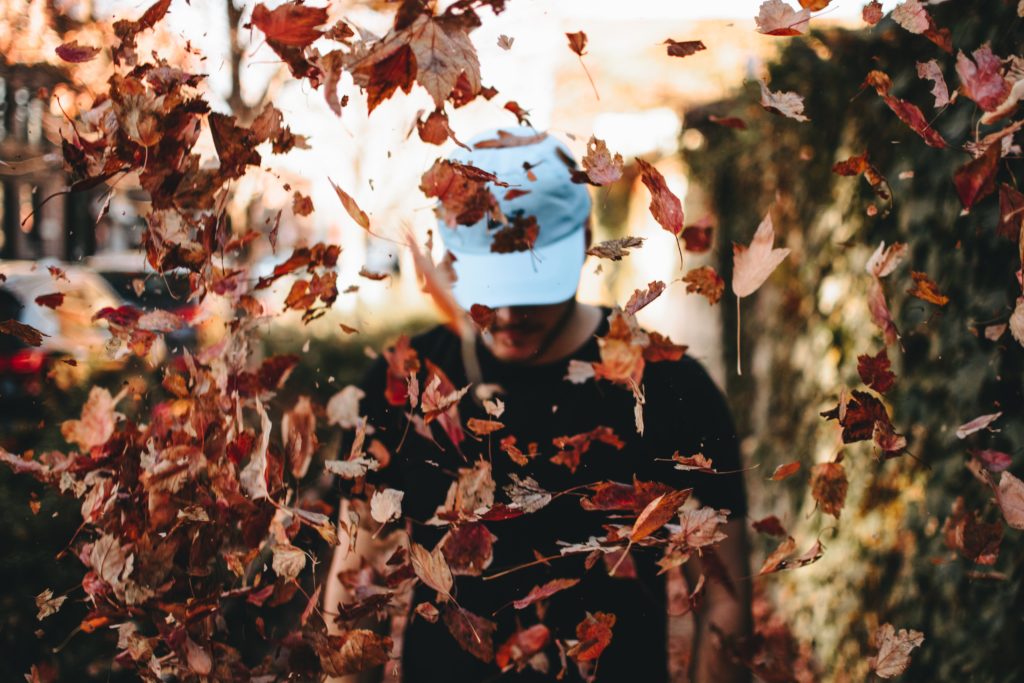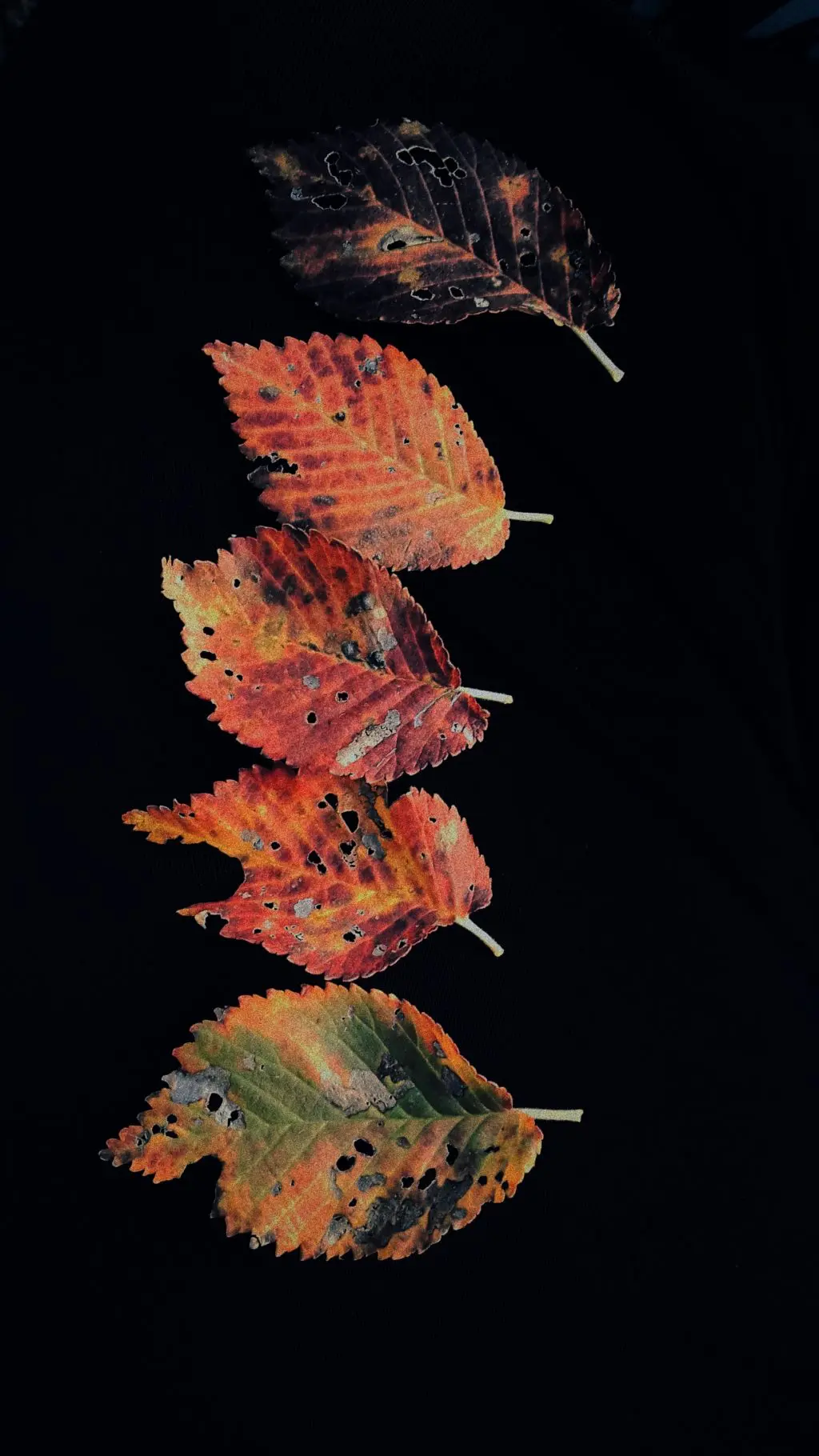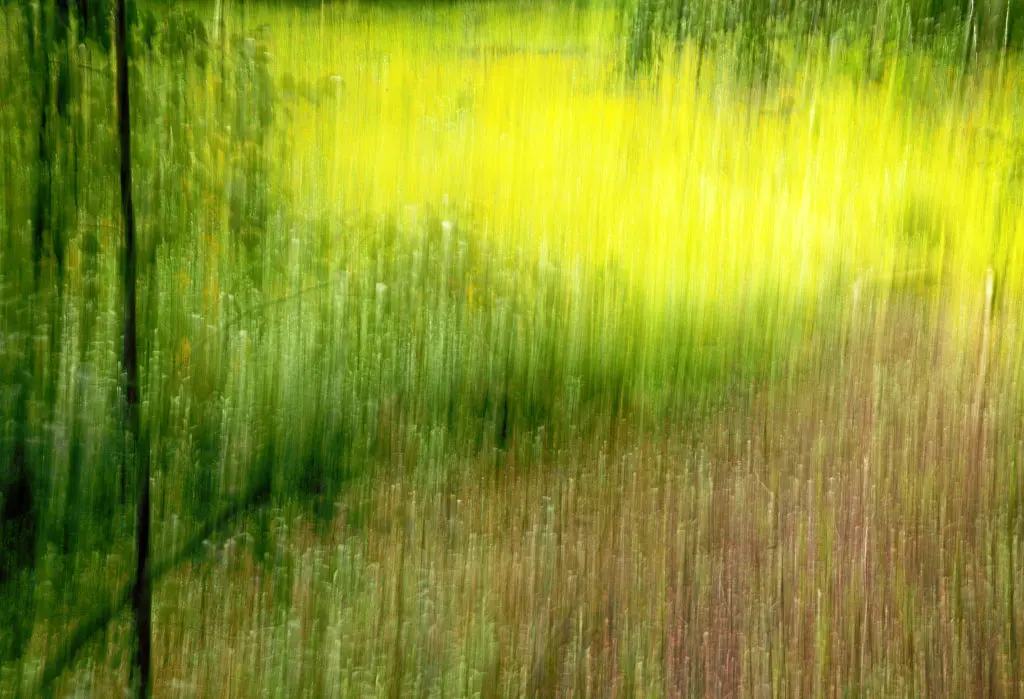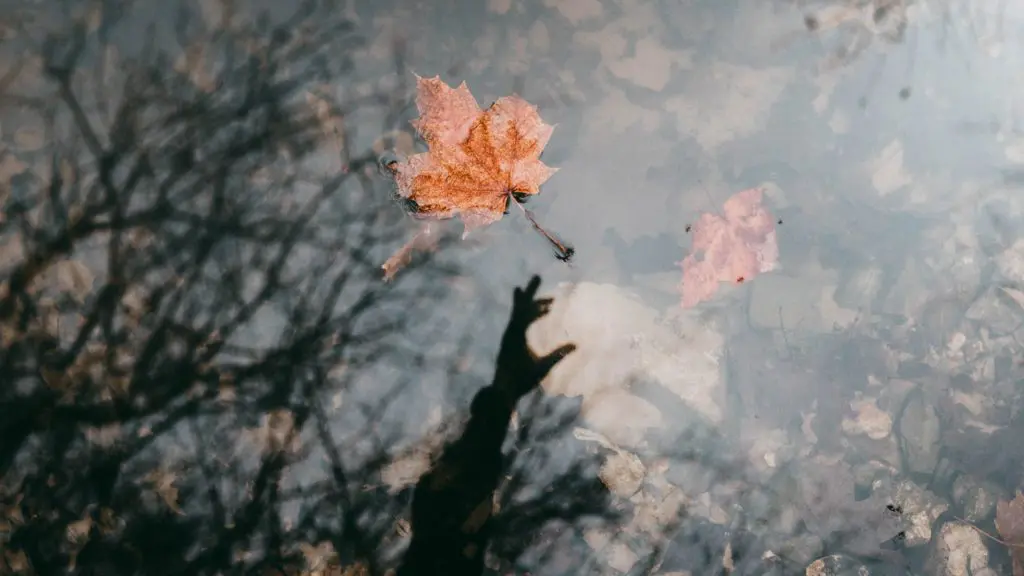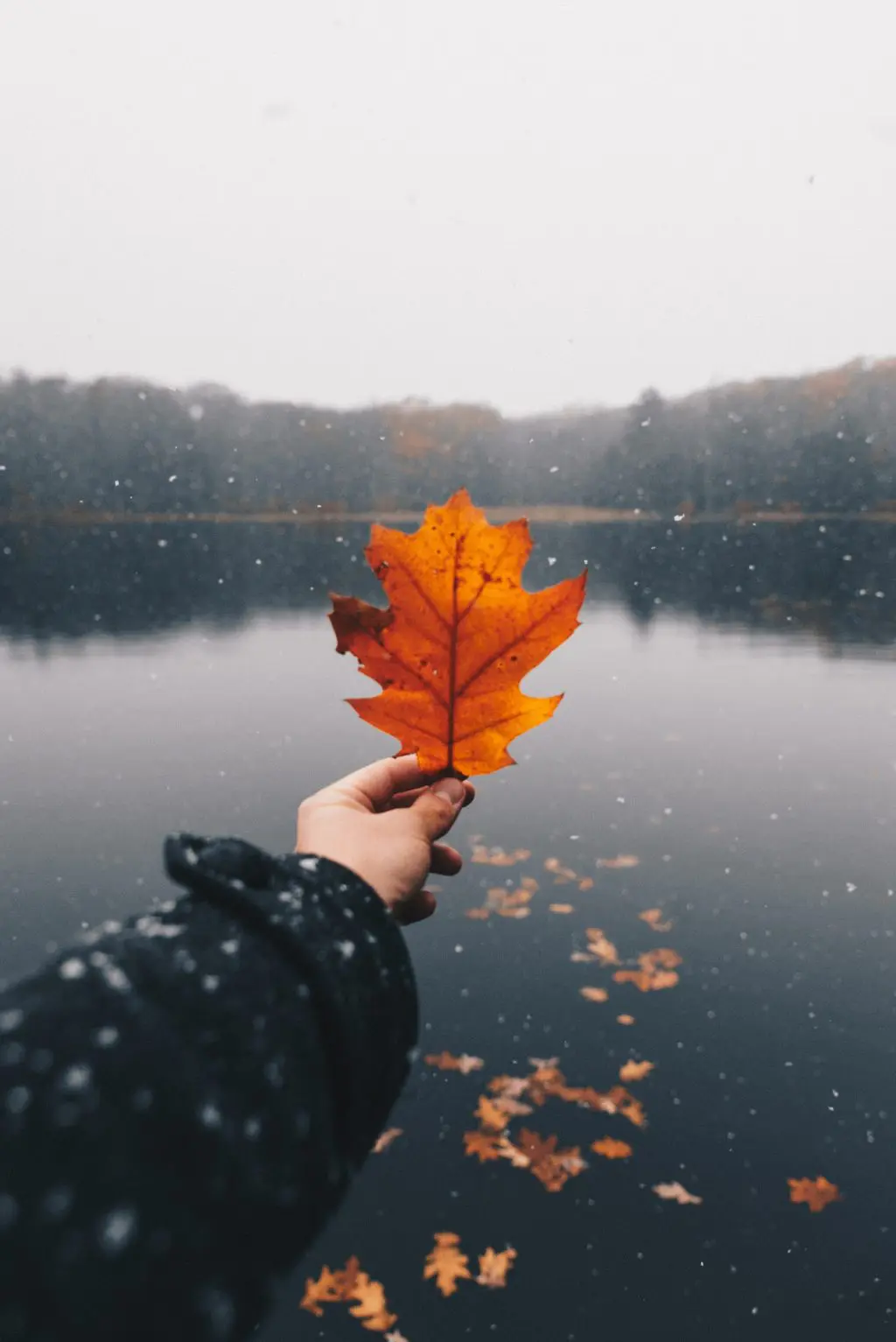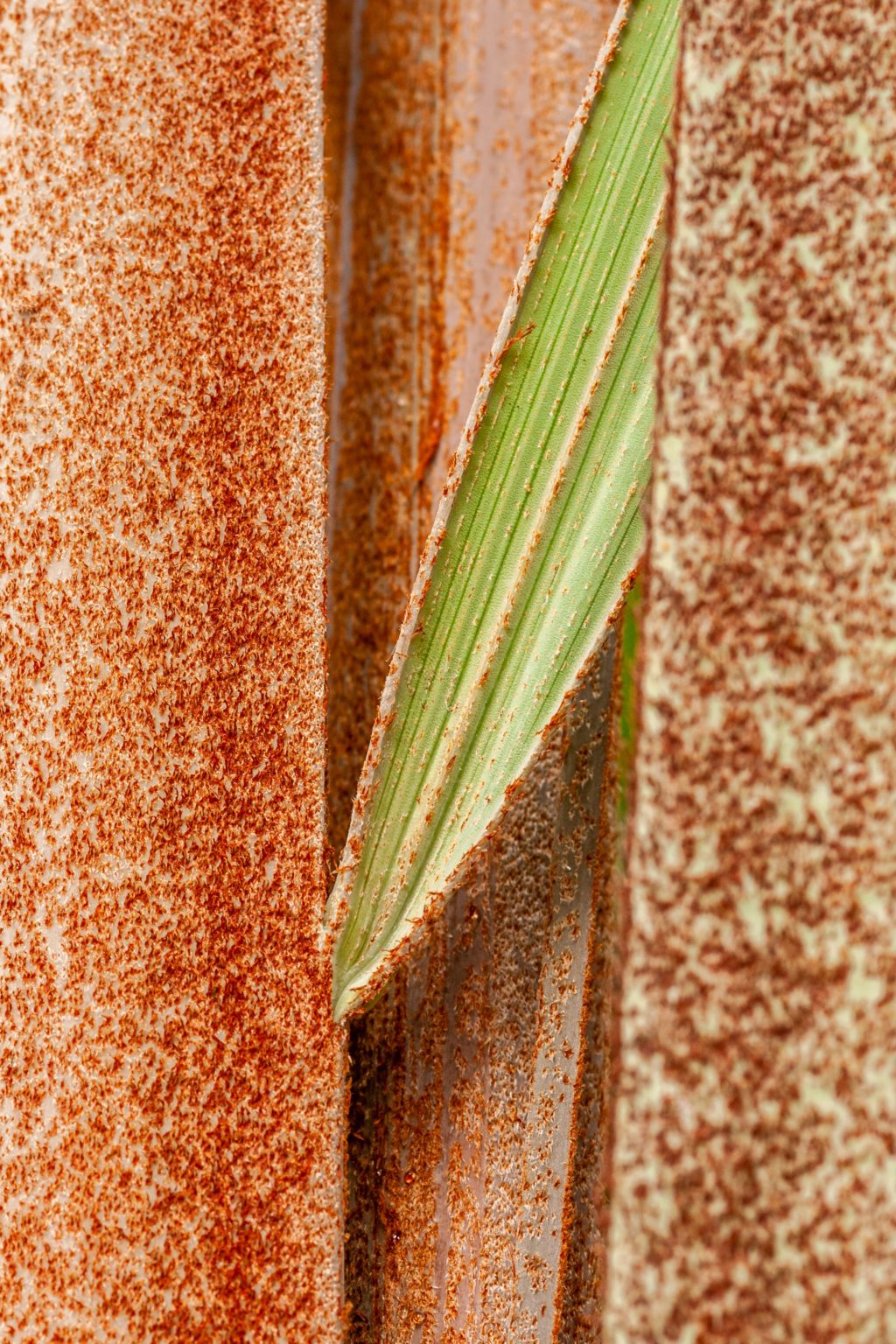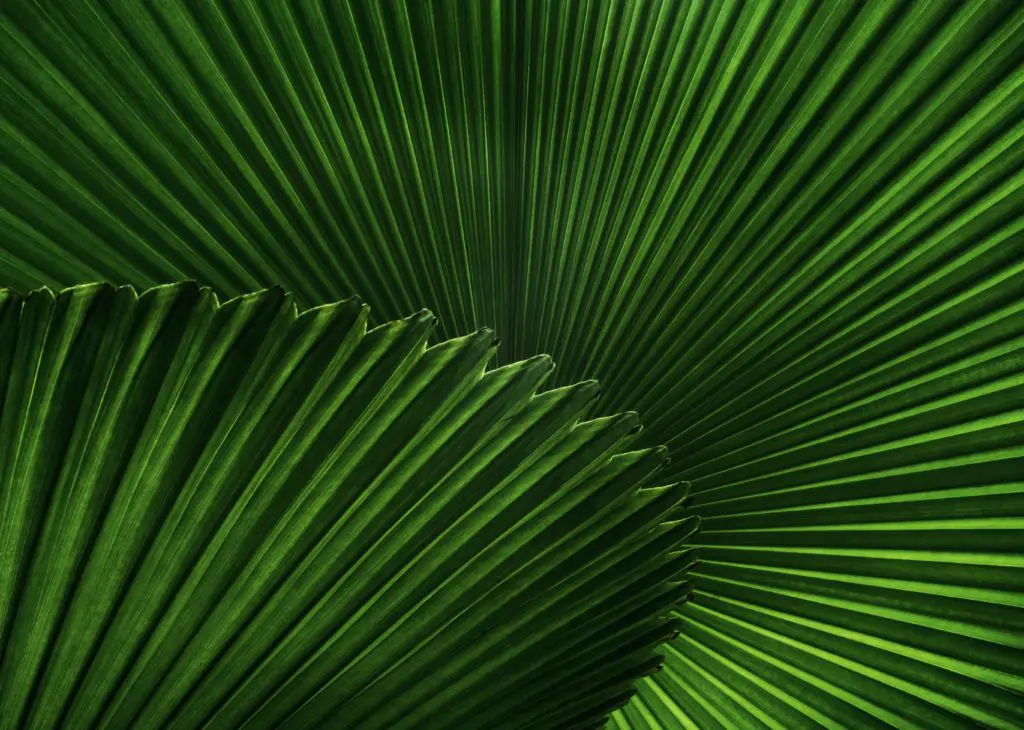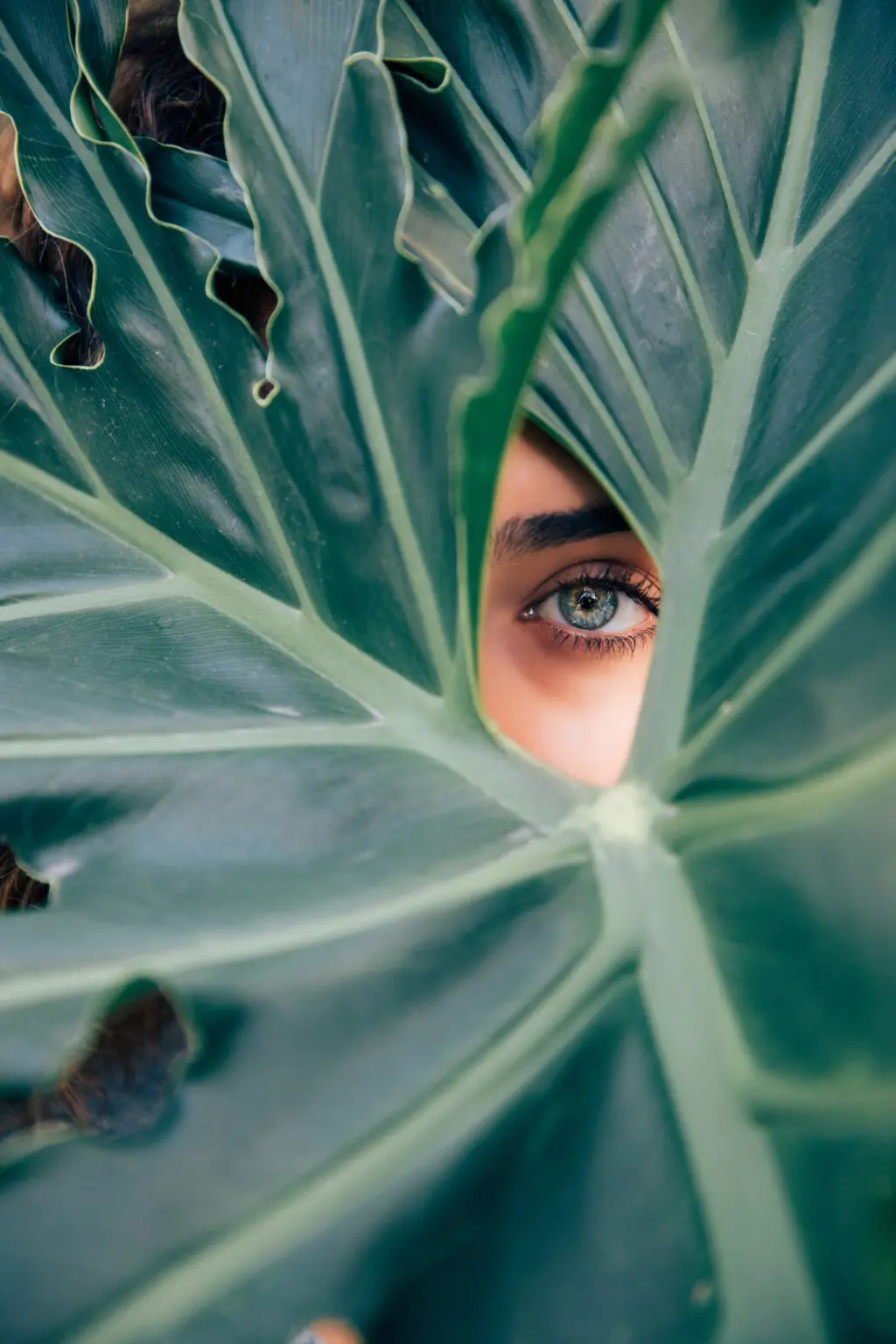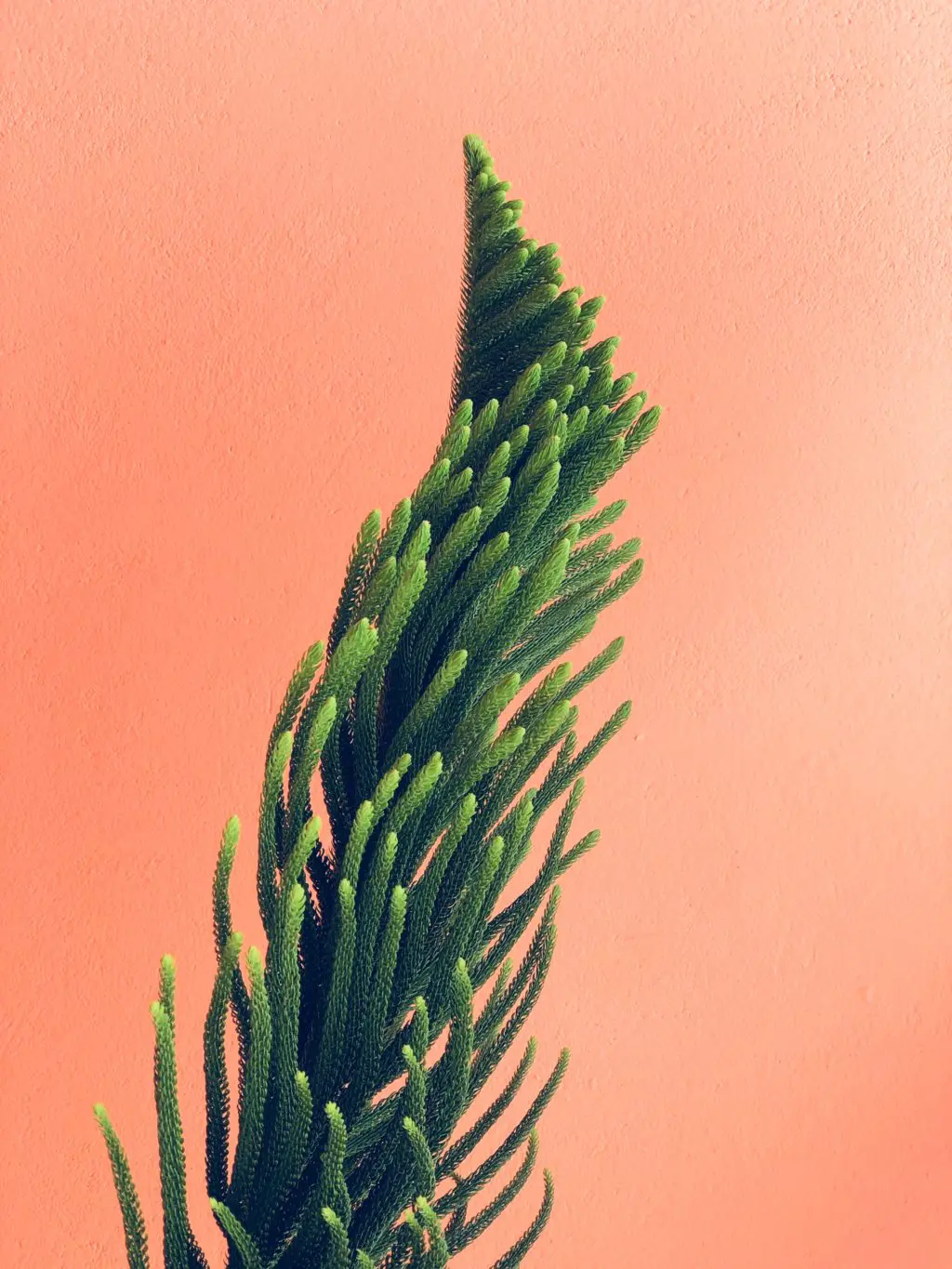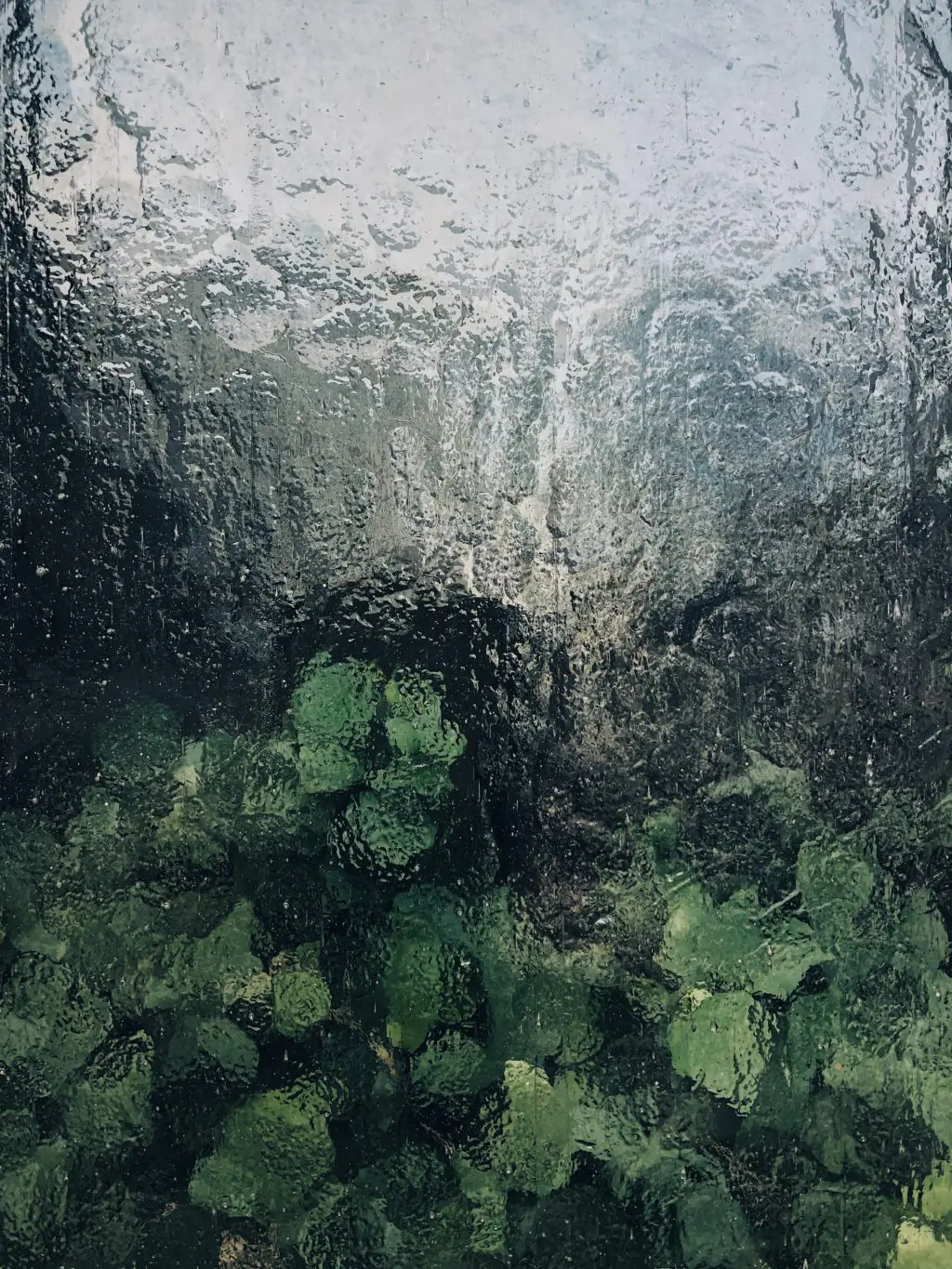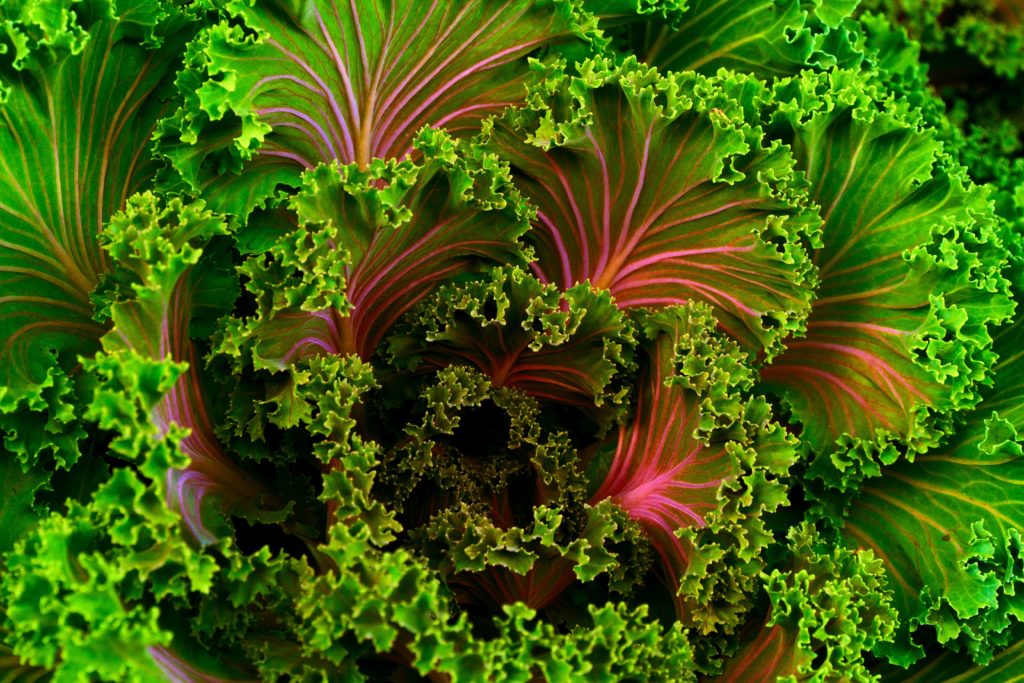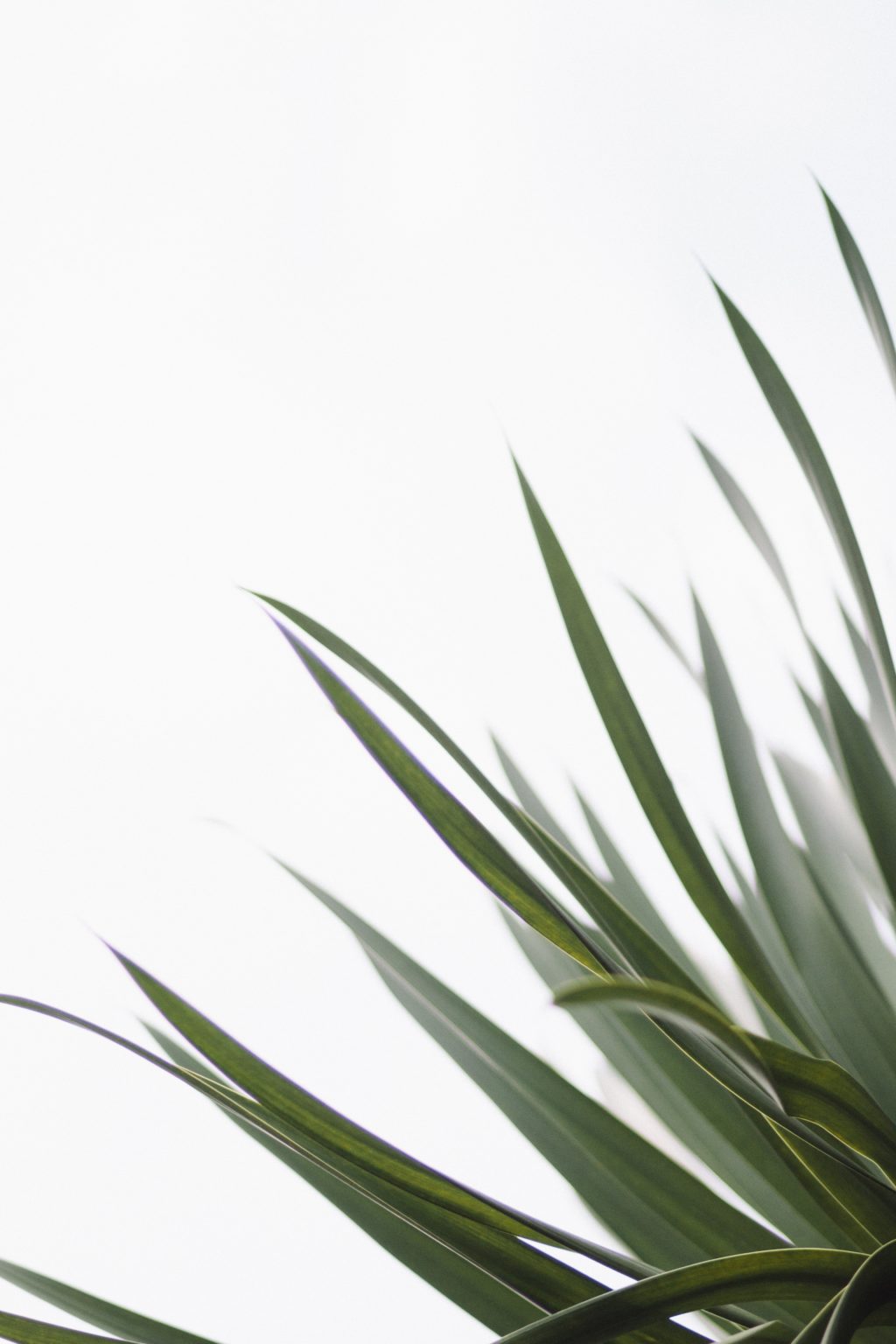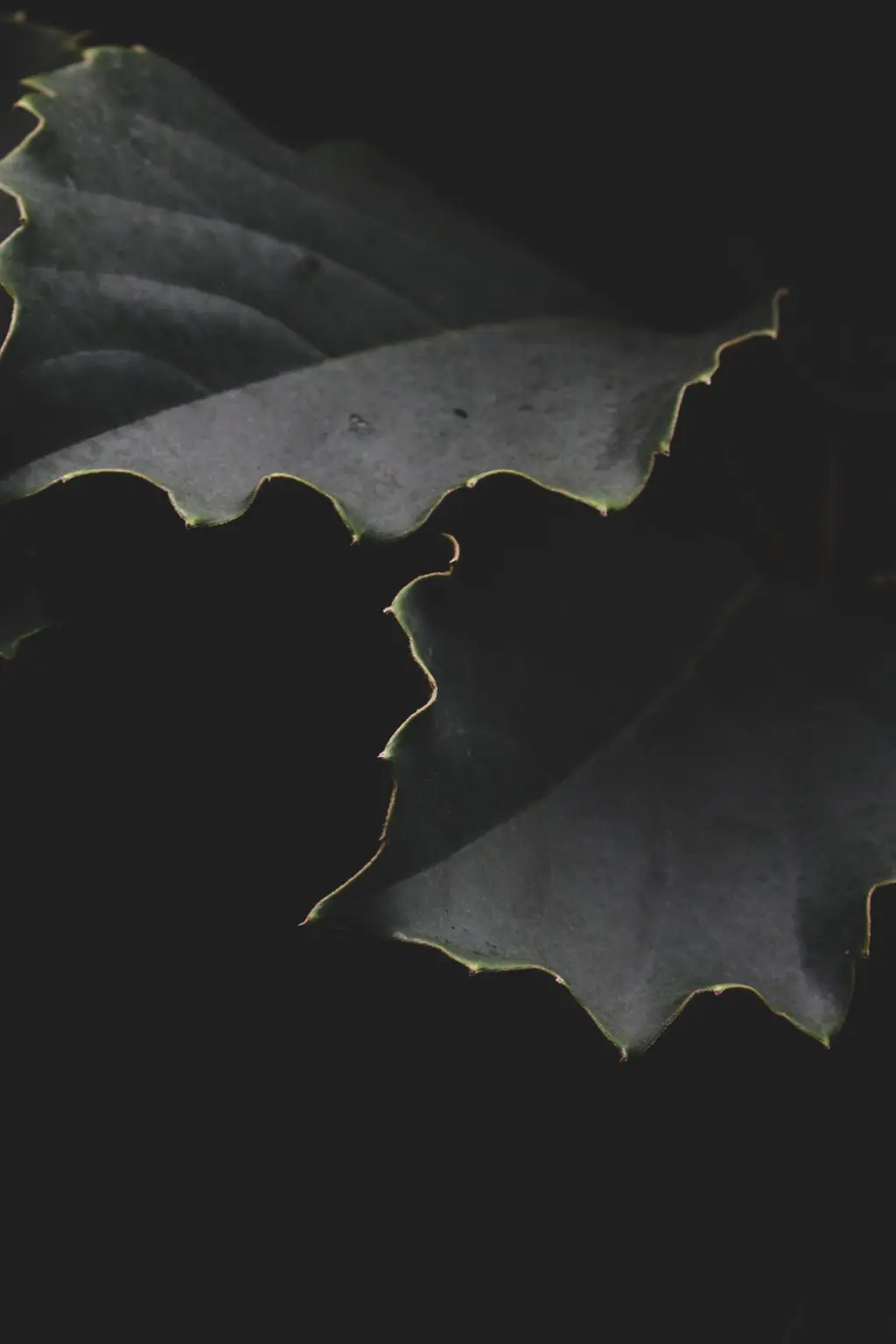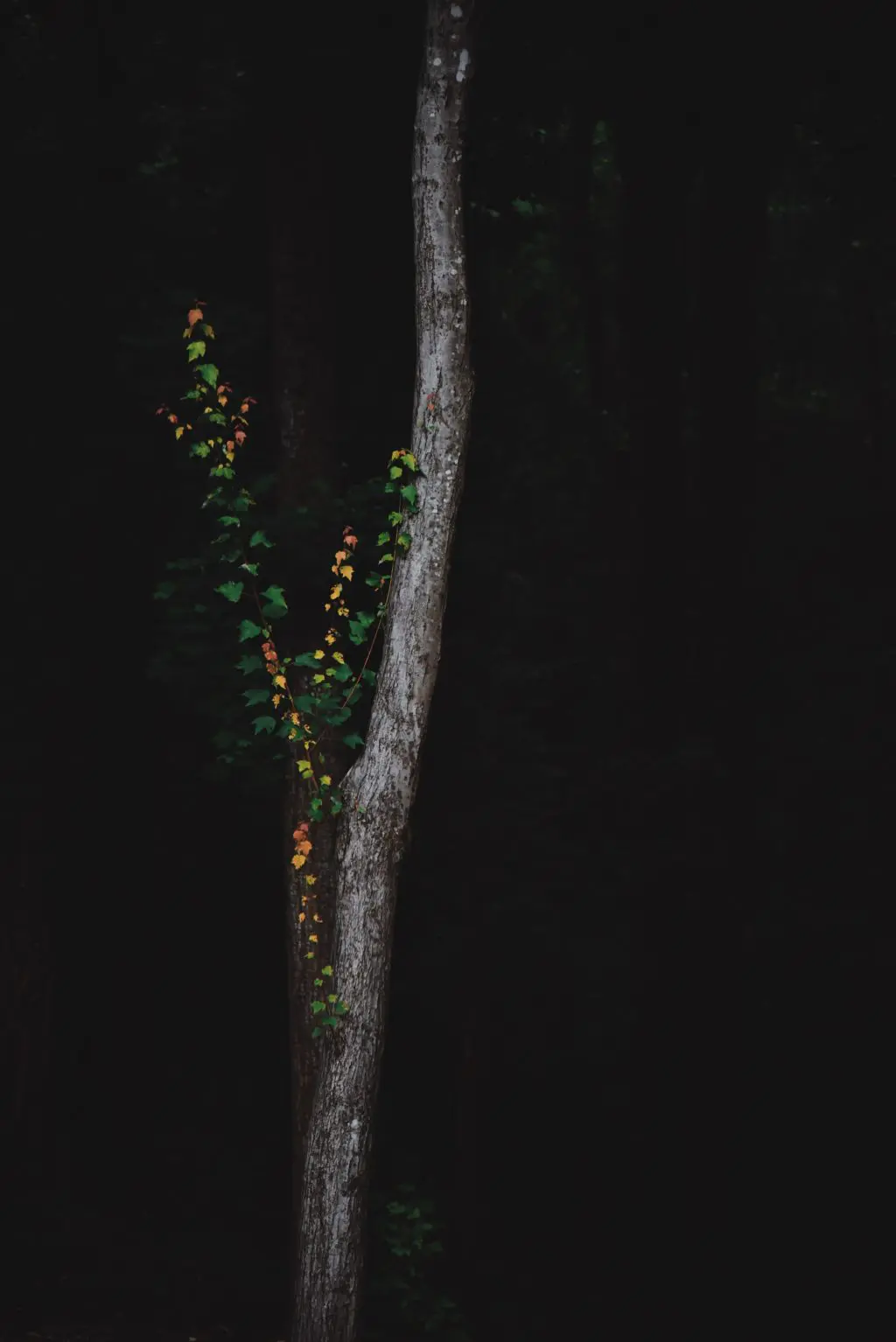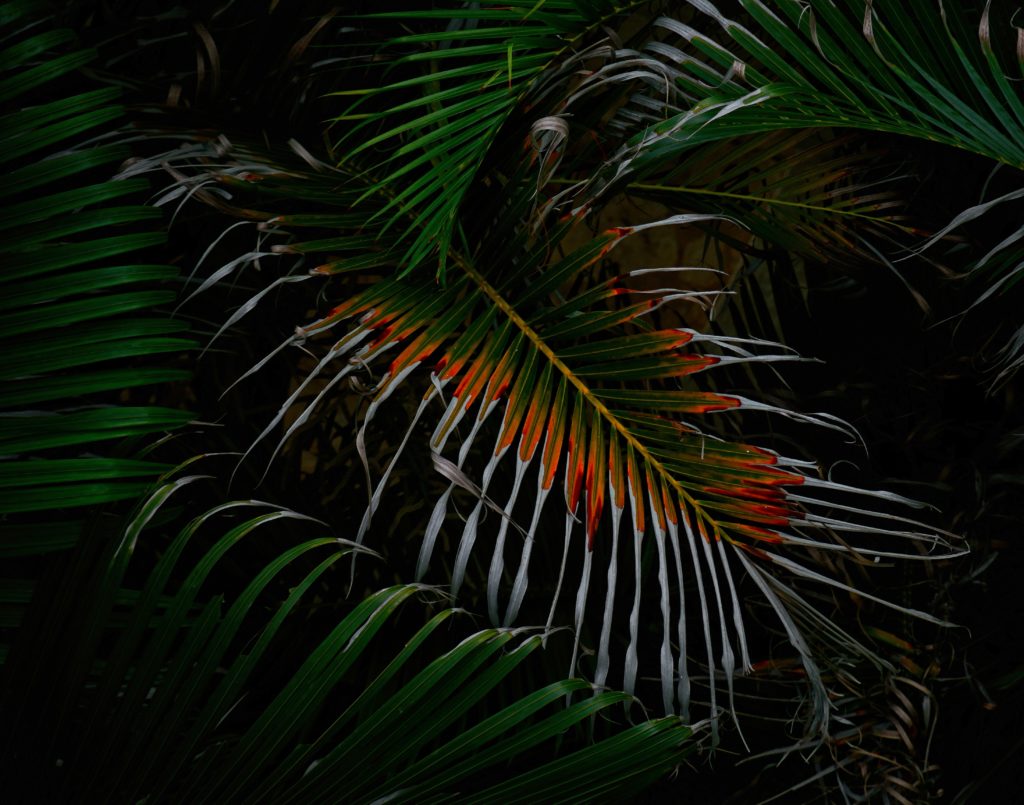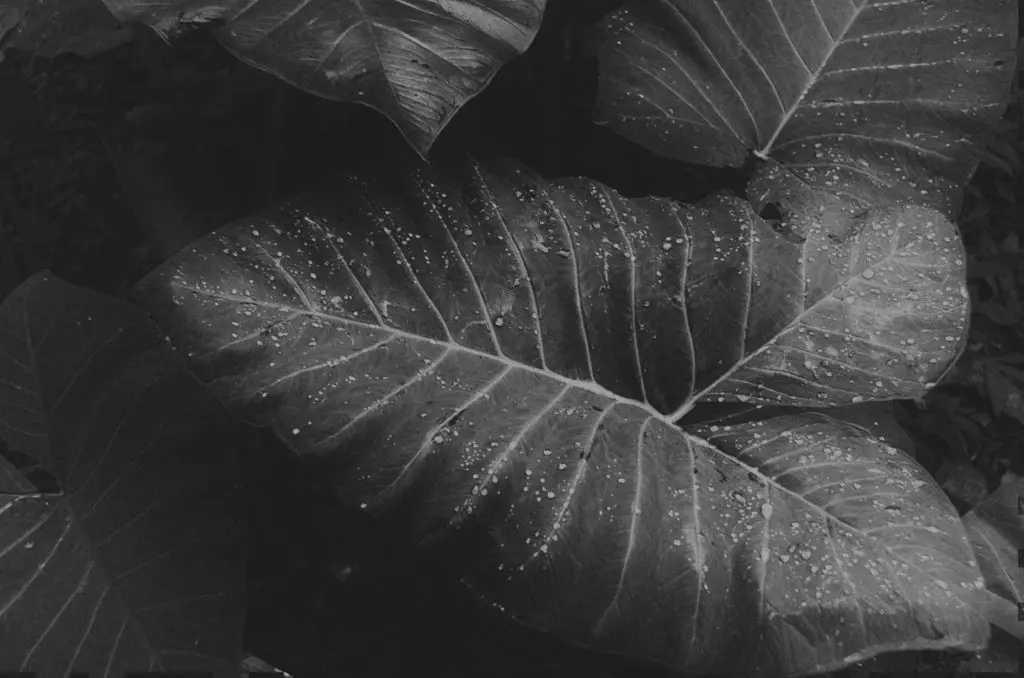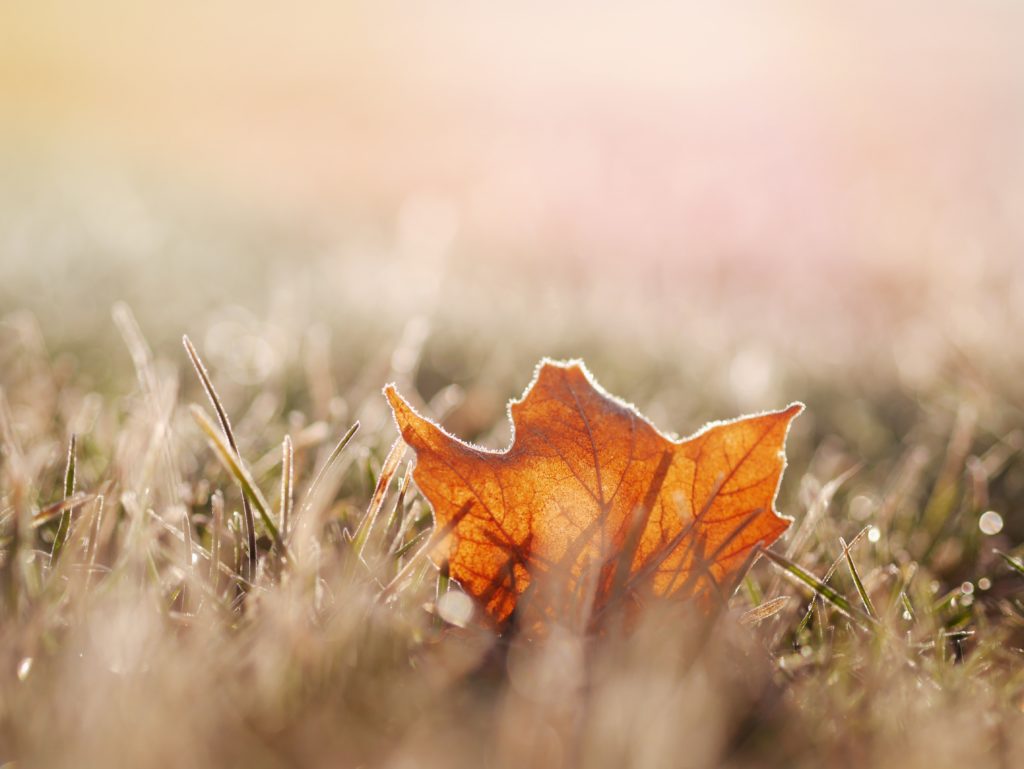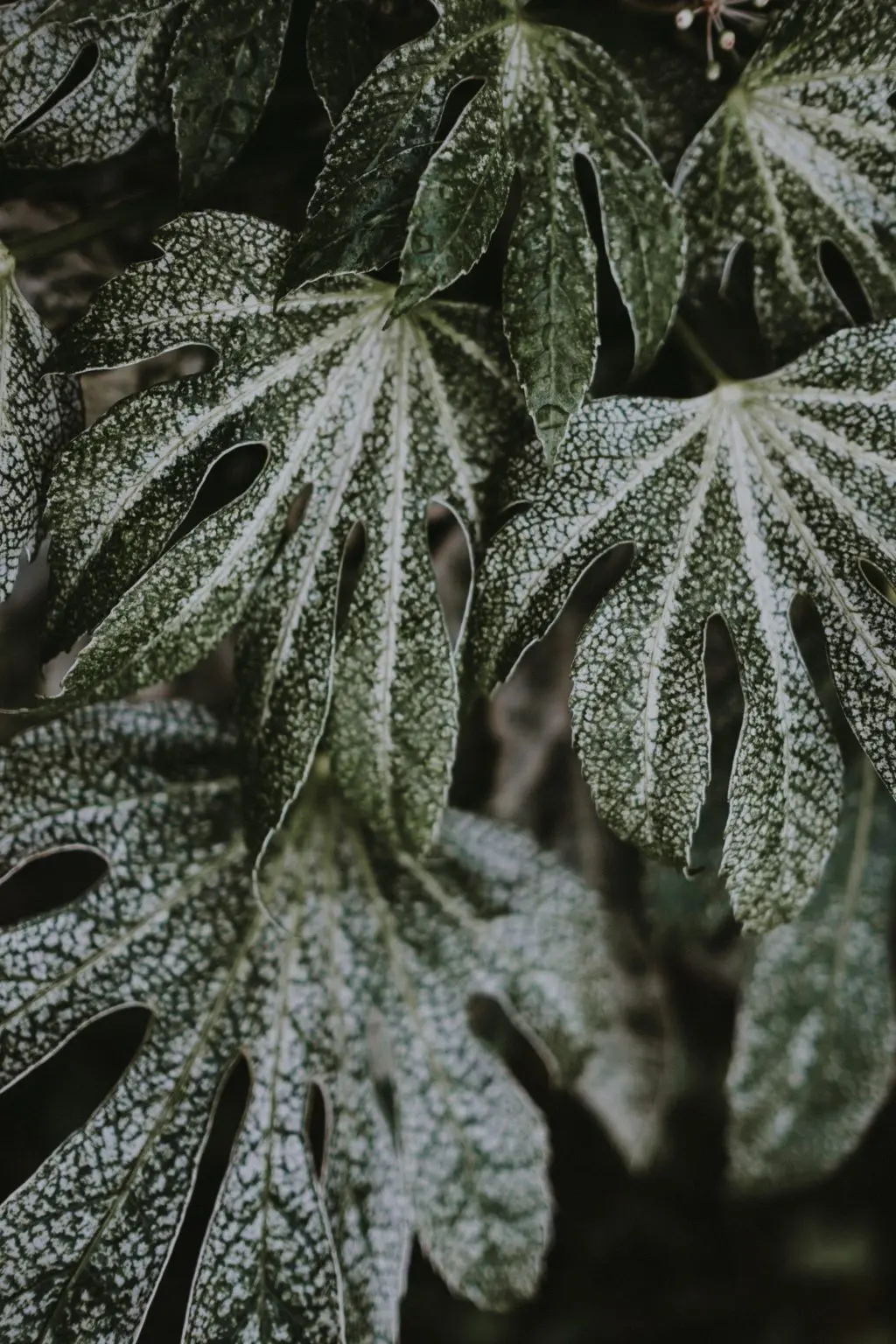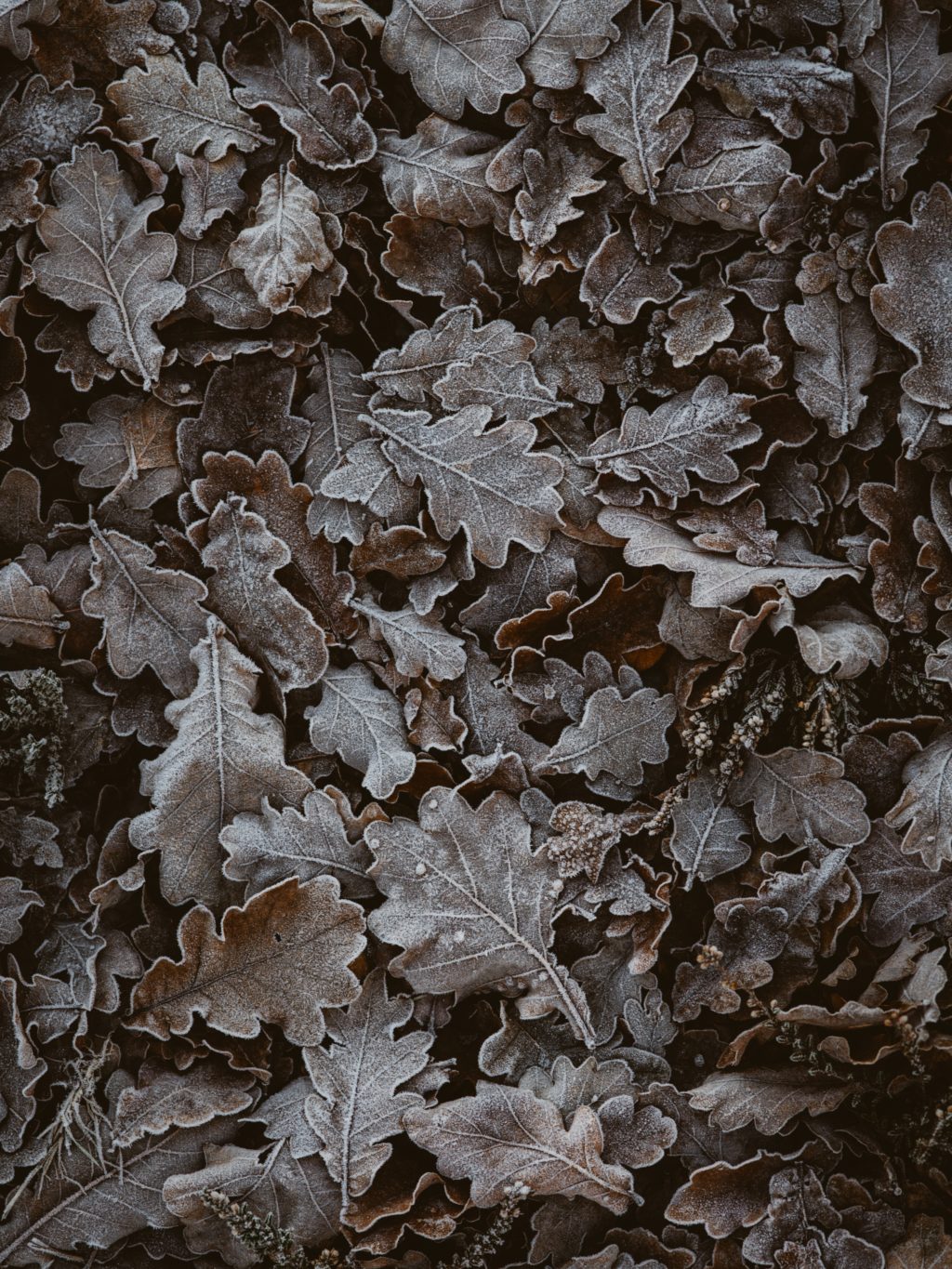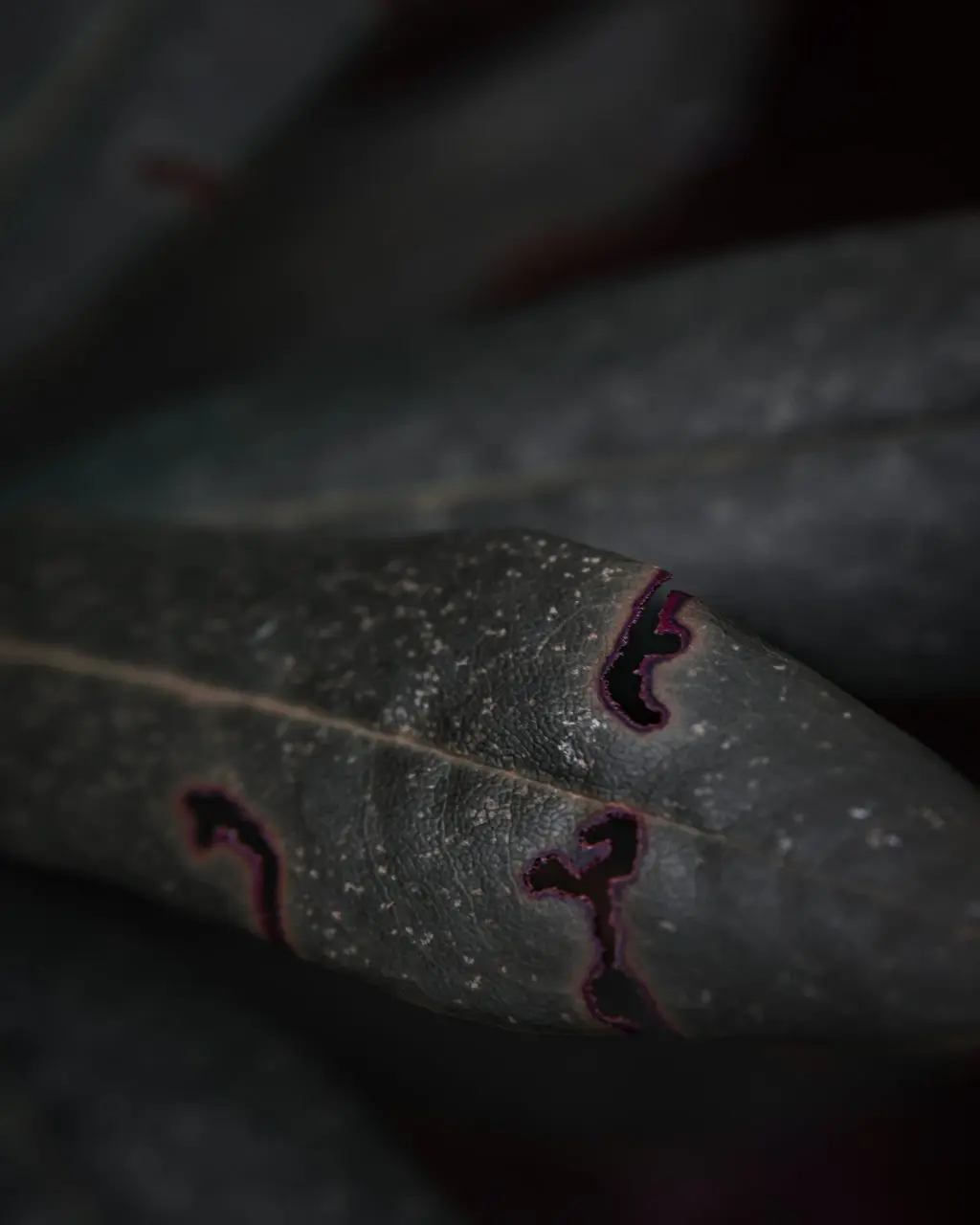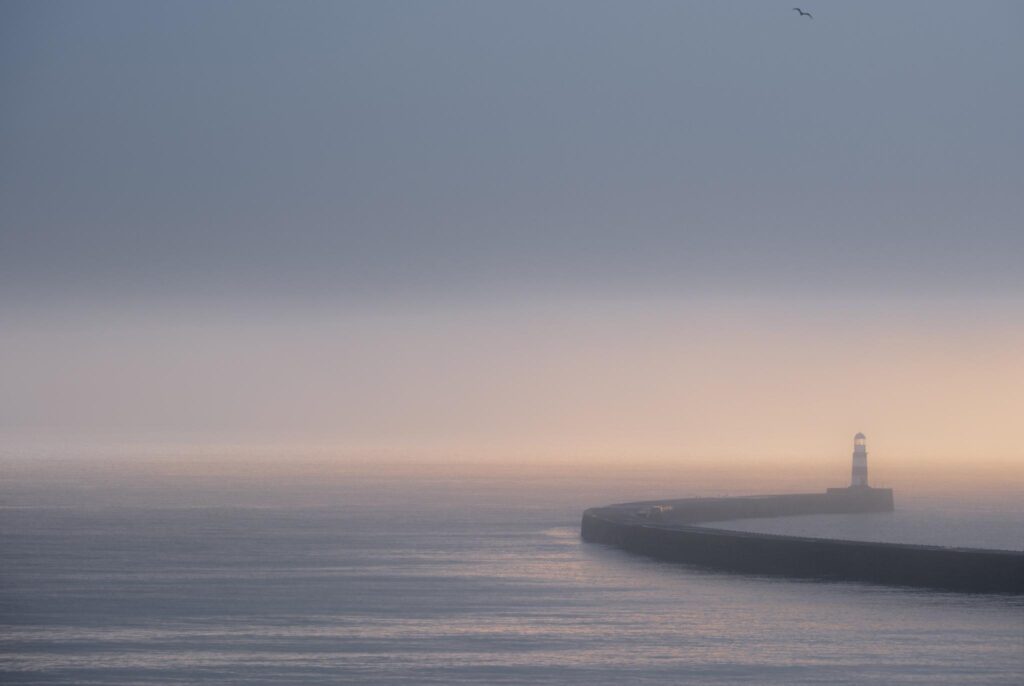Leaves may look like a boring subject to photograph, but when you look at the textures, patterns, colours in the leaves and how they change with the seasons, in terms of character and colours, they can be great subjects to be photographed in many ways. Leaves can also be one of the most difficult subjects to photograph interestingly since they are not too noticeable as a separate subject for photography.
So, if you are finding it difficult to get that one great shot or you are looking for inspiration on how to photograph leaves creatively, in this article we share some amazing tips on how to photograph leaves, along with some brilliant examples.
Leaves can be photographed either in-situ – on the trees or plants, or when they have fallen off the branch. So without further ado, here are some ideas, tips, techniques and what to look out for when photographing leaves.
1. Best Time To Photograph Leaves:
Of course, leaves can be photographed in all seasons, but timing may vary depending on which part of the world you live in. In order to photograph leaves, you just can’t photograph a boring patch and call it an interesting image. You need to watch out for other factors like light, contrast, colours, textures, composition, etc., to enhance your leaf photography.
So the best time for leaf photography really could be any season, but definitely embrace the color opportunities of Fall. Winter has its own beauty in the fallen decaying leaves, leaves with frost on them; Spring with new leaves sprouting and Summer with its dark green foliage.
Many regions may not have much foliage during early Spring, but if you can find leaves in small colourful plants and perhaps evergreen trees, go ahead and shoot. Late Spring will have new leaves and buds sprouting, which can tell a different story. Photographers can use their creative eye to find the art in the new life that Spring offers
So really the best time to photograph leaves is all seasons. You just need to look around and find interesting leaves to photograph. It is all about the story you are telling with your image.
Let us take a look at what we need to watch out for when photographing leaves.
2. Look For Contrasting Features, Colors, Textures And Patterns:
When we say contrast, look for contrasting characteristics like smooth vs rough, soft vs hard, light vs dark, and so on. For example, leaves over a roughly textured surface, sharp focus against a soft blurry background or look for lighter or brighter leaves against a dark background or vice versa. This will make for an engaging photograph.
- Contrasting Colours – Autumn is well known for the bright reds, golden orange and yellow hues that later turn into golden brown shades that mostly extend into the Winter. This is the best time to look for contrasting colours when photographing leaves. This season also provides a great mood for your images (darker mood), adding to this are the effects of the fog and the rain, which is prevalent through Fall.
If you do not have a defined Autumn season where you live or when photographing leaves in other seasons, look for bright colourful leaves especially in indoor plants and other plants that thrive well in shady areas. They come with a brilliant natural palette that can make your photographs of leaves extremely impactful.
- Textures And Patterns – Leaves come in all shapes, colours and sizes. Have you stopped, observed and studied how many varieties of leaves are out there? Some leaves may look even more beautiful than flowers, so make sure that you use the textures and patterns in the leaves to enhance the visual impact and to create brilliant compositions.
3. When You Photograph Leaves, Try Macro:
Leaves have a lot of intricate details in the form of textures, patterns, colours. You need to get close in order to capture these minute details and this can also give way to creating abstract or fine art images.
By getting up close, you can observe even the tiniest of details that the veins and other textures in the leaves provide, in these scenarios, be mindful of the light. Try macro shots with a macro lens if you have one, to record close up details of the leaves. Getting super close can give you beautiful works of art that are worthy of being framed and hung on a wall.
4. Fill The Frame:
Look for a colourful bunch of leaves to fill the frame while still keeping one leaf as the focal point in the frame, fill the frame with similar leaves that look beautiful or fill the frame with one leaf only. For these type of shots, in order to get the shot crisp and sharp, you will need to shoot at narrow aperture values depending on how much depth you want to be in focus. Filling the frame also gives you the benefit of avoiding all the other background distractions in your image and can sometimes give you a very abstract image.
5. Look For The Light:
- Soft light – this helps bring out the colours in the leaves. Soft light also helps to bring a moody feeling to your image. Avoid harsh light by all means as it can make the image and the colours look washed out and glary! The best time to shoot leaves outdoors will be the golden hour when you have soft golden light that can illuminate the leaves and add more pop and details to the image or on overcast days when the light is soft.
- Backlight – Backlighting leaves can help to define the shape and textures leading to stunning leaf images as this also helps with photographing the colours and other details in the leaves. If used well, depending on the thickness of the leaf, time of the day, season, etc., backlit leaves can add a glow and sometimes rim lighting to leaf images. Early morning images can help the dewdrops on the rim of the leaves glisten thereby adding an extra dimension to leaf images and the same applies to frost that borders the leaves during winter seasons.
- Light through the canopies – this light can especially be beautiful creating dramatic mood and light in leaf images. Again look for soft lights early during the day or late in the afternoon – preferably the golden hour.
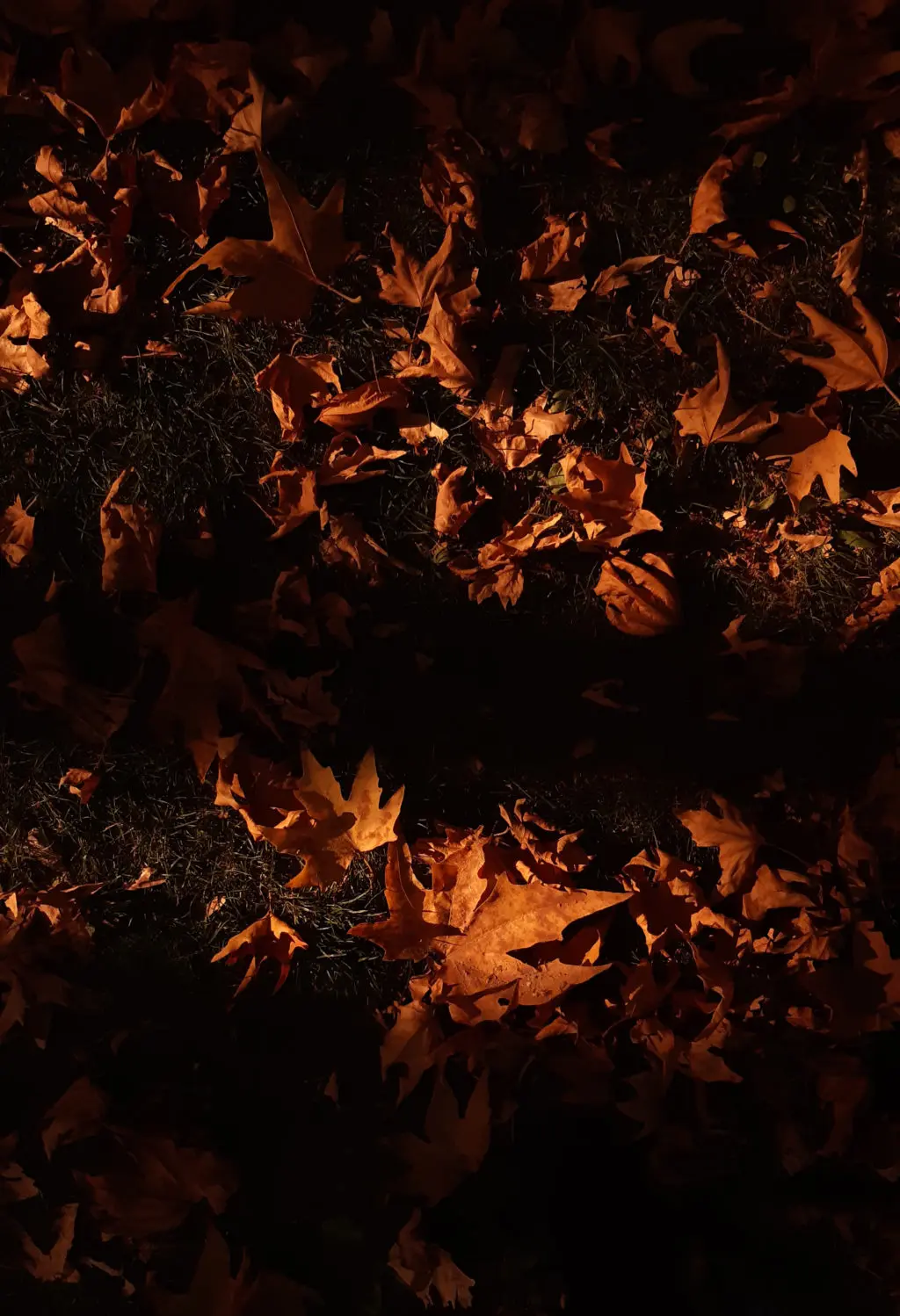
- Shadows – Beautiful light can cast beautiful shadows as well. When photographing shadows, you can either photograph only the shadows of the leaves for an abstract look or you can look for shadows on or near the leaves or you can use shadows among the leaves to add depth to the image.
6. Use Colourful And Interesting Backgrounds:
When photographing leaves on trees, look for an interesting leaf or a cluster of leaves that can be the main subject in your photograph. Use a wider aperture value so that you get a beautifully blurry background that helps the leaf that you are photographing stand out. Make sure you also have the light in the right direction so the leaf is illuminated and the details are clearly available to photograph.
Back or side light can also lead to stunning bokeh that can give a magical touch to leaf photography. Also, when choosing backgrounds for leaf photography, make sure you use a background that has contrasting and beautiful colours.
Note: Narrow apertures can bring attention to the other leaves and as a result decrease the focus from your main leaf and make the frame look messy. So wisely choose aperture values!
7. Look For Leaves Away From The Trees:
Leaves, depending on seasons, can be found in places other than trees and most of the time it is the leaves that add beauty to some landscapes, ponds, lakes, rivers or puddles. Especially during Autumn, lakes, ponds and rivers become colourful when the fallen leaves float on the water adding drama to an otherwise simple waterscape.
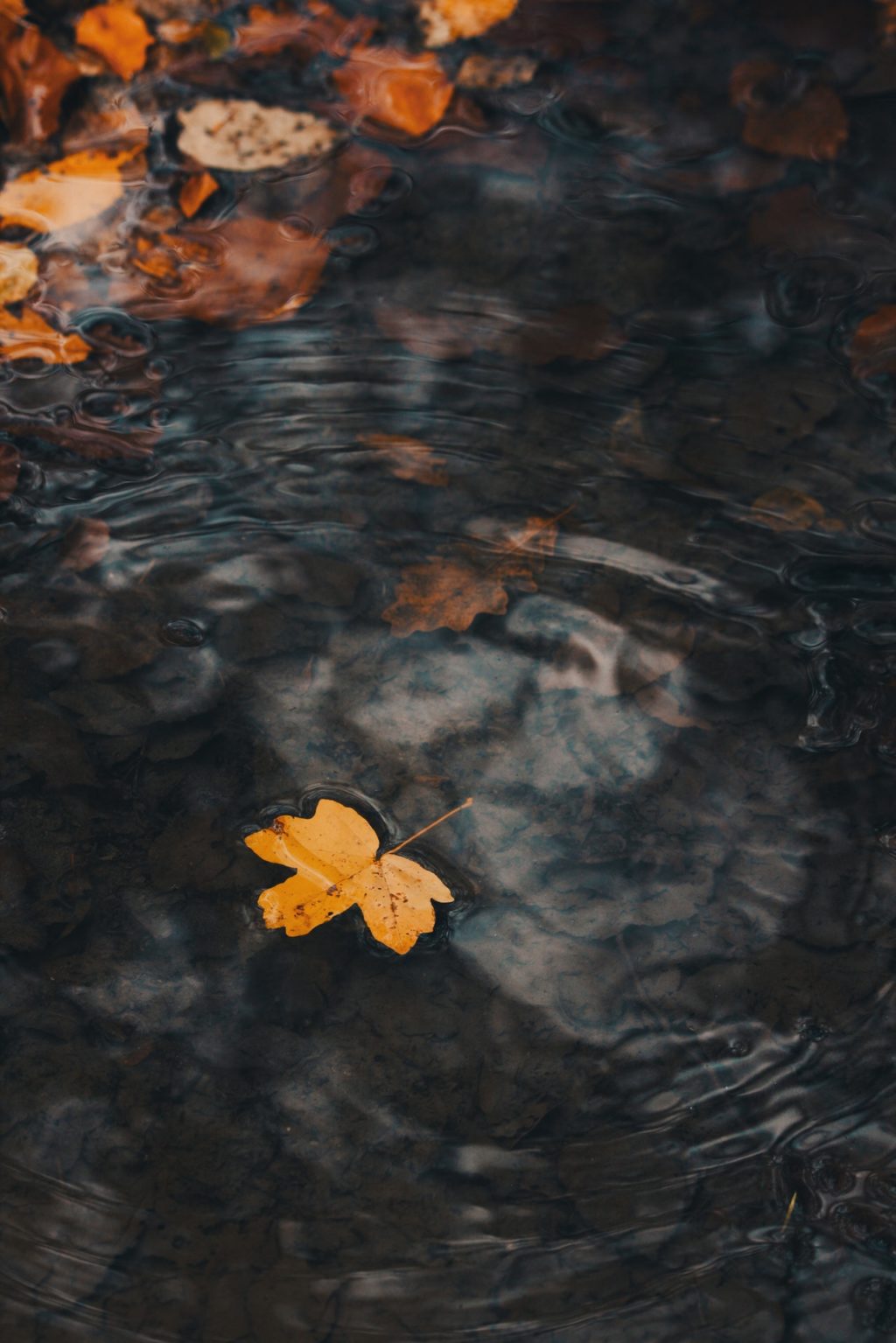
- Look down – when out on walks, watch out for leaves in interesting places. On walkways, fences, doors, gates, among the grass, on rough surfaces, on snow, frost, on the shore, puddles, rivers, lakes, etc. Make use of light, contrast and other features to shoot interesting frames.
- Park chairs and benches – these are great places where you can look for leaves and compose them among these objects to tell a story. You can also use other elements/objects around to frame the leaves.
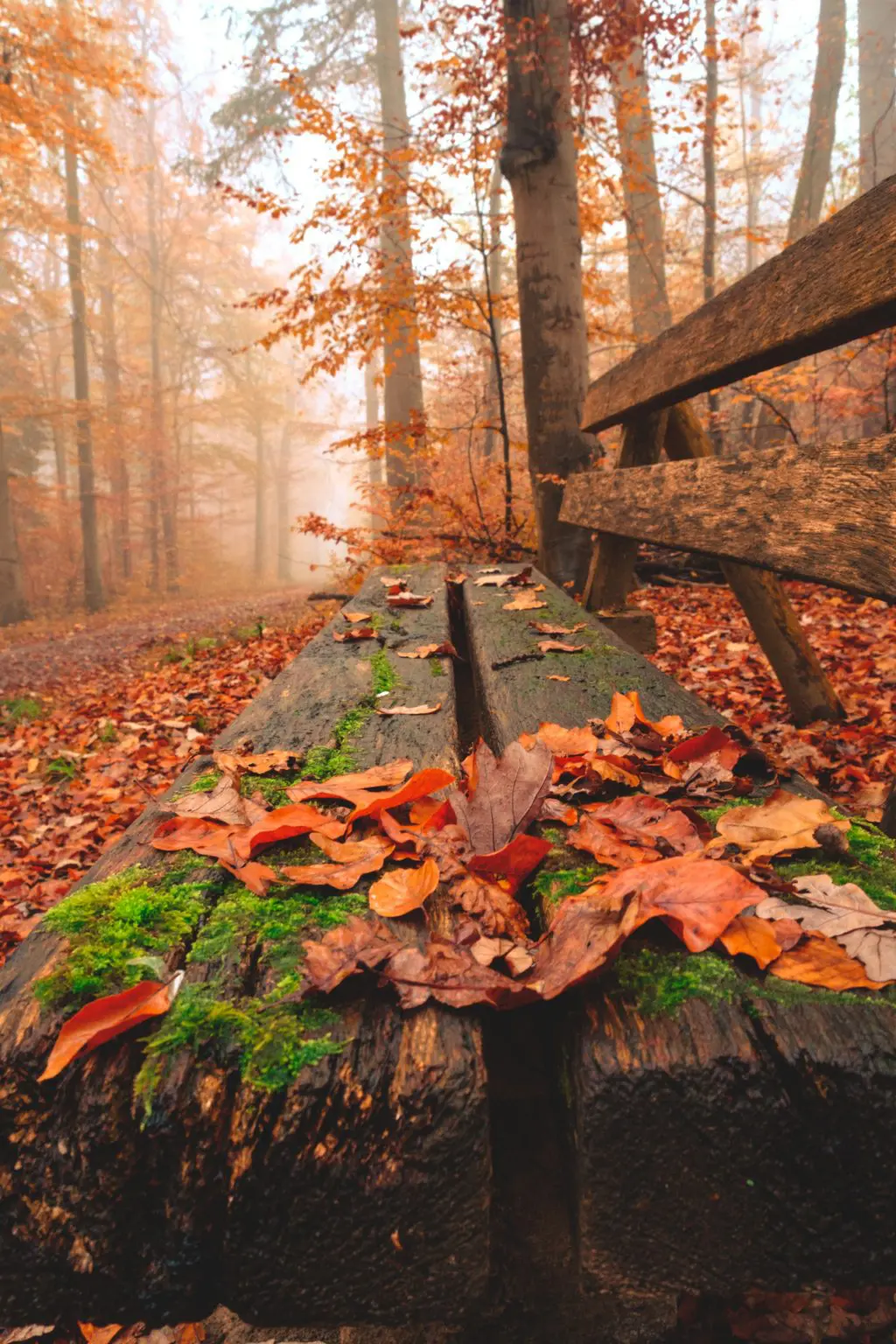
8. Include Other Elements In Your Composition
Rather than photographing plain leaves, look for interesting elements and add them as part of the leaf that you are photographing. These include snow, frost, water drops, etc. that can enhance the colours, shape and light in leaf images. Frost especially can help give more definition to the textures and shape of the leaves also drawing a contrasty art form in the leaf itself. Raindrops or dewdrops on leaves can make leaf images shine, and add brilliant light especially if it is sunny after the rain.
9. Go Creative With Silhouettes:
Silhouettes are a great way to create compelling images and the same can be done for leaf photography. When creating silhouetted leaf images, you give more emphasis to the shape of the leaves rather than its colours and textures. Make sure you have the leaf backlit and you expose for the bright areas in the image (for example the background) so that you have the silhouette of the leaves, but still the colours and details of the background.
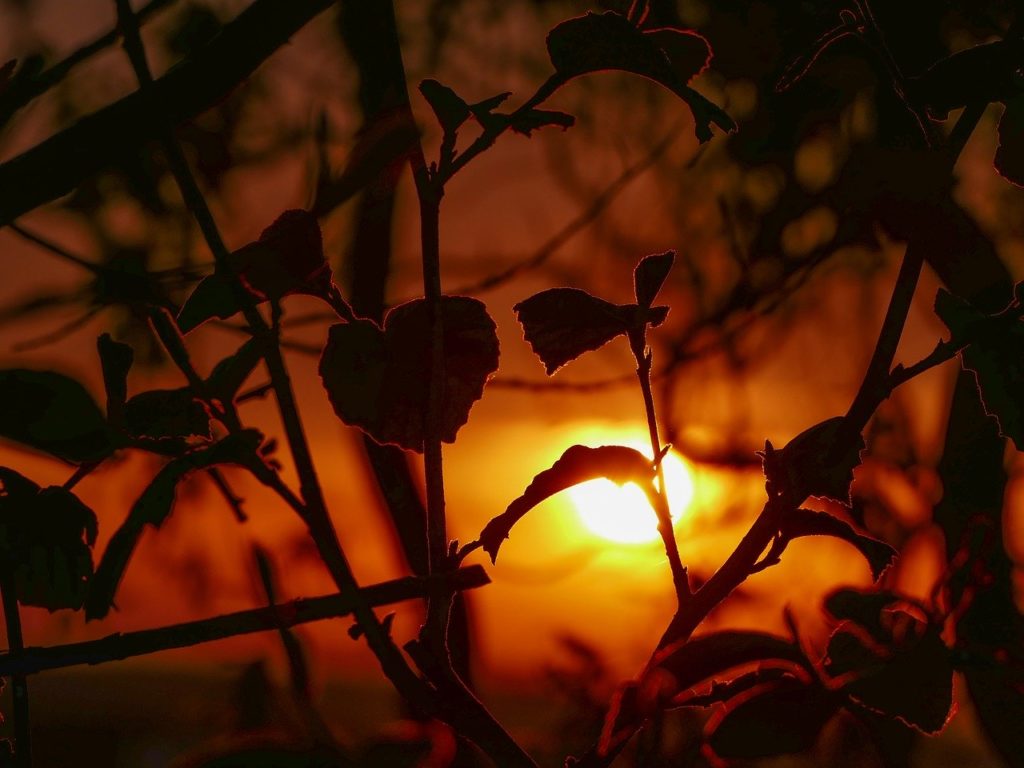
10. Look For Reflections:
If you are shooting during the rainy season or in areas where there are water features, look for reflections so you can add that when you photograph leaves. Some places to look out for are puddles, lakes, ponds, etc. where you can photograph the leaves and their reflection or just the reflection for a more abstract frame. You do not need to limit yourself by focusing only on a single leaf here – try an area with trees that have colourful leaves or look for a bunch of leaves.
11. Photograph Leaves As Part Of A Landscape:
Shoot at perspectives (usually by going low) and show the leaves or a single leaf against a landscape or as part of the landscape. Waterfalls or other natural landscapes are great places to use leaves as foreground elements.
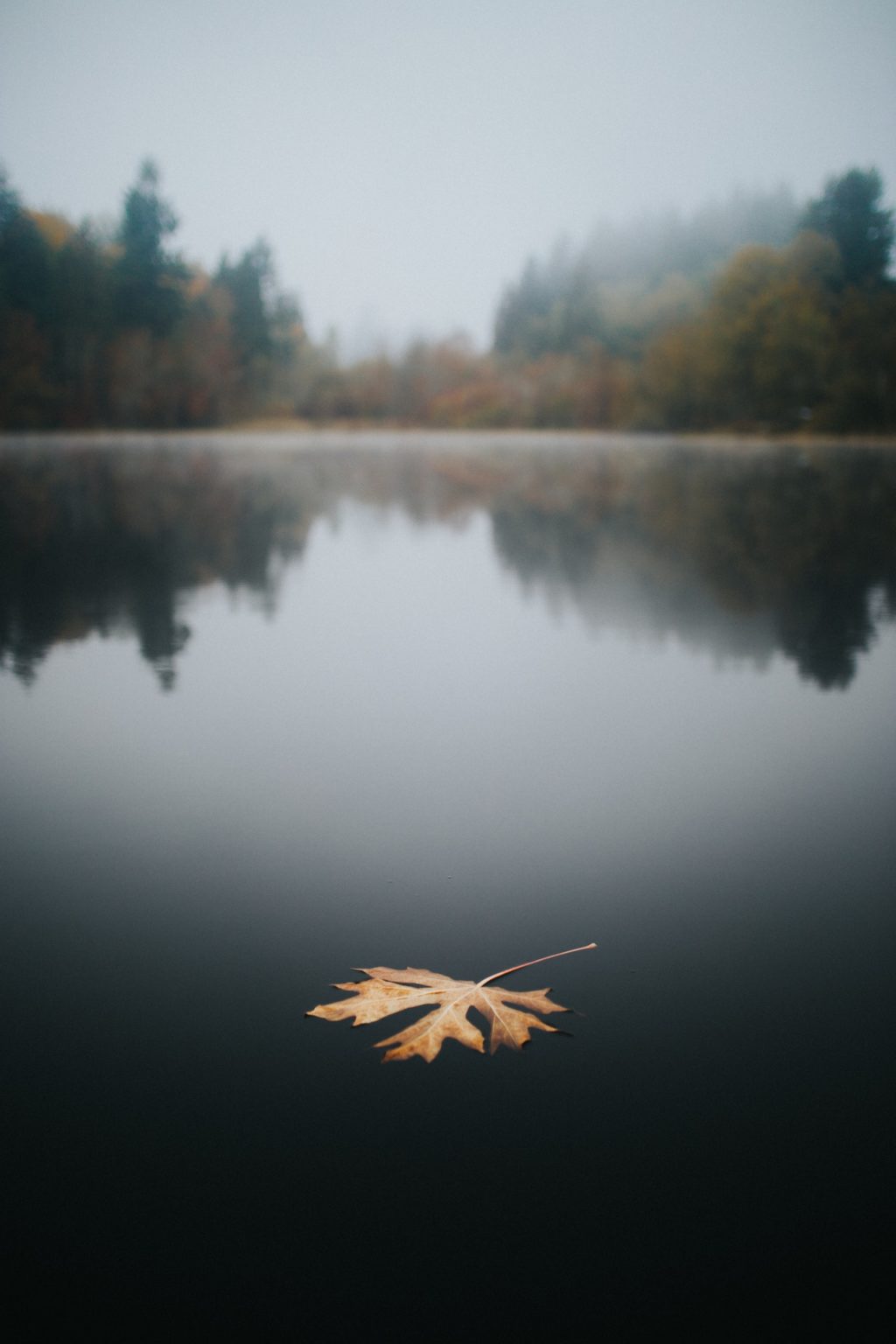
12. Photograph Falling Leaves:
Falling leaves can look very beautiful as they have a truly magical feel in them. Falling leaves can be a bit difficult to photograph naturally as you have to wait for the moment and be ready with your camera and its settings. If you are unable to capture them naturally, have a friend toss some leaves up in the air for you to photograph.
Make sure you shoot this in a location where you have beautiful background and light. Also, you need to shoot in burst mode, reasonable aperture and if possible manual focus to get a few shots that are usable.
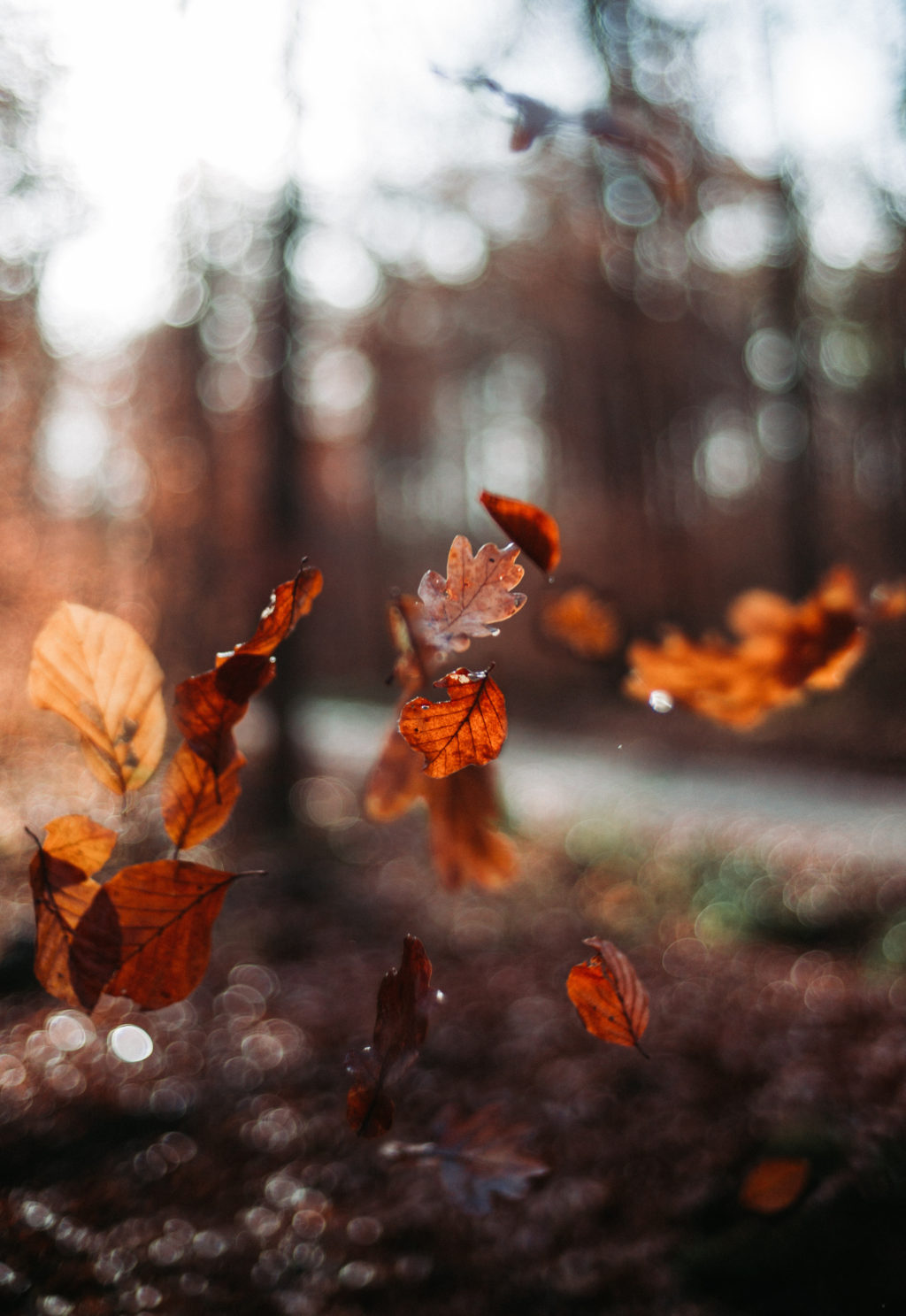
13. Make Abstract Images:
- Create leaf arrangements: If you cannot find natural arrangements that suit your creative vision and have a pleasing composition, handpick some of the best leaves around and make an arrangement so you can photograph them.
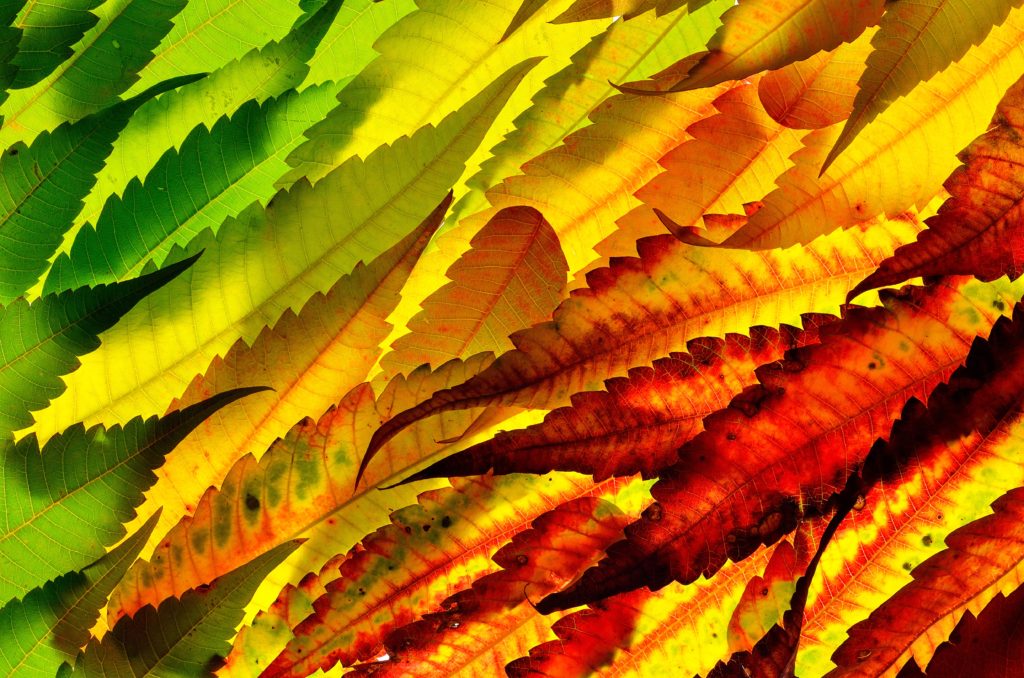
- Try ICM – When photographing colourful leaves, try intentional camera movement (ICM) to create abstract images. You may not know what you are creating before you actually look at the image itself. Experiment with different shutter speeds (shorter to longer exposures – start to experiment between 1/25 to 1 sec), aperture values and different types of camera movements (circular, vertical panning, horizontal panning, zoom burst, random, etc.). You may end up with a painting made using your camera. Make sure you use a tripod to keep the movement smooth!
- Photograph leaf skeletons – the skeleton of leaves can be found mostly during the seasons when the leaves decay and the inner veins get exposed. This is a great way to show the intricate textures of the leaves. You can photograph these skeletons against a bright background or on top of a textured background. Try converting these images to black and white for a more abstract image.
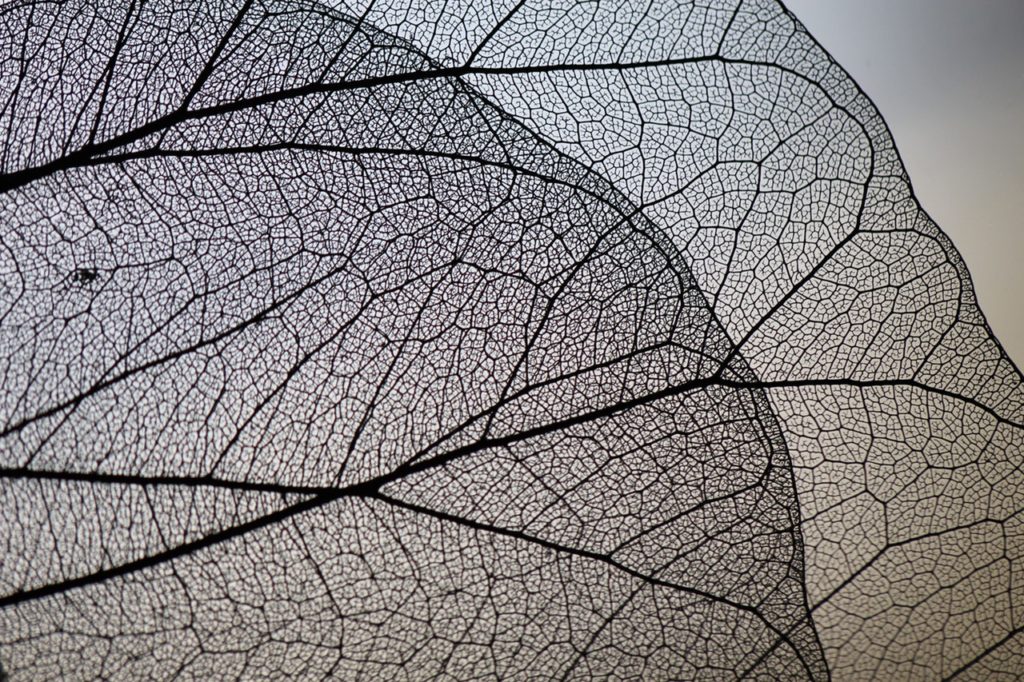
- Use your creativity – apart from the above, use your creativity to create really arty images with leaves. The choices are many – you just have to use your creativity.
- Photograph parts of a plant with a leaf or more – look for frames where you can create abstract art out of parts of a plant or tree along with leaves.
14. Frame Other Subjects With Leaves:
We have been focusing on just the leaves all through this article, but instead of just photographing leaves as the main subject, you can photograph other subjects where leaves are used to frame them. That way, you create an artistic composition in framing a subject while at the same time giving importance to the leaves in the frame.
15. Shoot Indoors When The Weather Is Bad Outdoors:
Do not restrict yourself to shooting leaves outside. If the weather is bad or if you wish to shoot indoors, do not hesitate to bring some leaves indoors and shoot. You can have them on a vase or do some arrangements laying flat, shoot by the window, etc. When shooting indoors, you have more control over the environment and light.
You can also shoot indoor plants through frosted glass or glass that has condensation to portray the real mood of the day or the surroundings.
16. Use Compositional Guidelines:
As always, you need to embrace and be mindful of composition when framing leaves. Look for leading lines, patterns, textures, shadows and light, use the rule of thirds, rule of odds, golden spiral, curves, etc. when you photograph leaves.
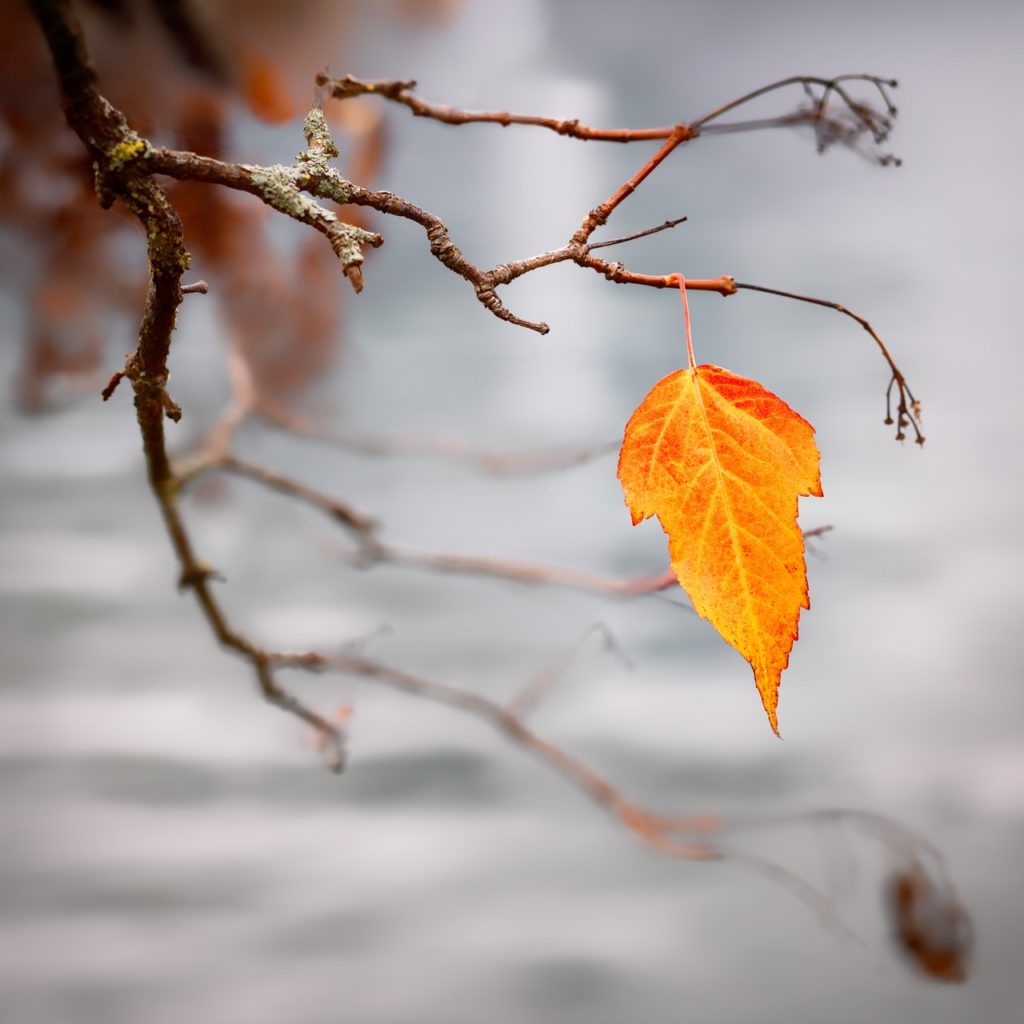
17. Try Minimalism:
For minimalist leaf photography, you can use a single leaf, part of a leaf, or a small bunch, but make sure you have some negative space so the emphasis on the leaves is brought to the fore. Minimalist leaf images can make for great works of art that can be hung on the wall.
18. Look For Odd Leaves:
You may come across odd leaves because they are differently coloured compared to the other leaves or they are dry/semi-dry compared to the others. Frame these leaves among the ordinary ones.
19. Shoot In Black And White:
Shoot leaf images in black and white for more visual impact. Do not just convert a colour photograph into black and white, but take the time to study what is available in the frame – light, contrast, textures, patterns, lines, tonal range and then if you think that image is good for black and white, then go ahead and shoot.
20. Camera Settings For Leaf Photography:
When photographing leaves, it is best to shoot using manual mode, aperture priority or shutter priority depending on what you need to shoot. Here are some tips to keep in mind!
- Watch out for breezy conditions as this can make the leaves move and create blur in the images. Adjust your shutter speed accordingly – use faster shutter speeds (faster than 1/500 of a sec) to freeze movements.
- Always shoot raw
- Manual mode – this more gives more control over the settings and with a good understanding of the exposure triangle, you can dial in the right settings to get sharp images and correct exposure. Choose the desired aperture value and always have the iso at the lowest possible in order to get noise-free images. Always have shutter speed faster than (1/focal length) taking into account the crop factor. The best advice is to have it faster than (1/(2 x focal length)).
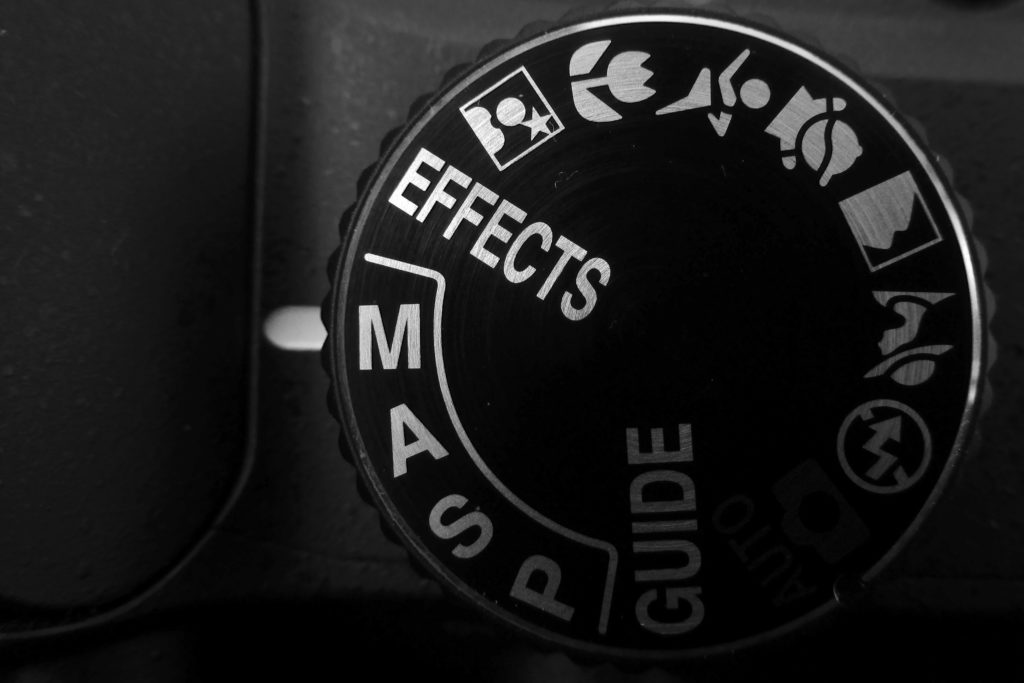
- Aperture priority – this mode can be used in situations where you are going for a wider or deeper depth of field. You set the desired aperture value and the camera sets the other values depending on the light available.
- Shutter priority – this mode can be used when you play with abstract art like ICM where you will want to set the desired shutter speed to obtain certain results.
- Metering – If you have a frame that is evenly lit, you can simply use matrix metering, but it is always best to keep an eye on the histogram so you do not have blown out highlights from background lights or lost details in shadow areas. If you are photographing the leaf against a bright background, for example, a backlit leaf, you will need to use spot metering to keep the colours and details in the leaf. Check to see if you will need to dial in a bit of exposure compensation along with this.
- White Balance – depending on the light situation, you can use one of the white balance presets in your camera. If you are unsure of what to use or if the light is tricky, then shoot using auto white balance (AWB) and make adjustments while post-processing.
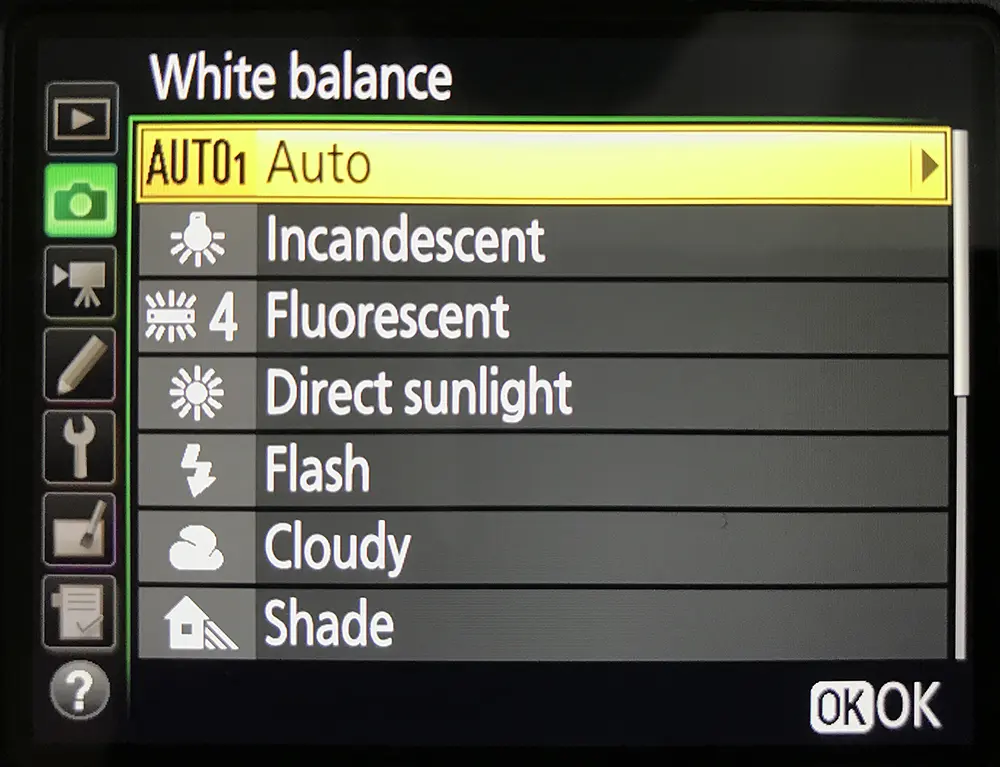
- CPL Filter – When shooting reflection images, if you come across unwanted reflections that seem to ruin your shot or if you come across weird reflections on the leaf surface itself, then make use of a CPL filter.
- ND Filter – When shooting for long exposures like ICM or if you are including other moving water features in the frame, make use of an ND filter to control light and record movements.
- Stabilise – turn on image stabilisation on lens and camera when handholding the camera for the shoot.
- For beautiful bokeh or creamy backgrounds – try the widest aperture possible so you get a beautifully blurry background or bokeh. Make sure that at this aperture value, all the areas that need to be sharp are acceptably sharp.
- For greater depth and crispy sharp details – use aperture values greater than f/7 so you get a lot of depth and sharp details. This is mostly useful when you are photographing close details of the leaf or when you are photographing a mass of leaves and are looking for greater depth of field.
- For backlit images – although the leaves for these images will be backlit, you will still want to capture the colours and details in the leaves. So it is best to use spot metering and at the same time keep an eye on the histogram in order to preserve details in the background as well. In extreme cases, you may want to use a reflector to add some light if required.
- For silhouettes – since you will have the leaf silhouetted against a bright background, you will need to meter for the light in the background. This way you can preserve the colours and other details in the background rather than having a washed-out look.
21. Other Important Tips On How To Photograph Leaves:
- Protect your gear because most of the time you may be working in rainy, foggy or frosty conditions.
- Use the right camera settings for the type of photograph you are looking to create.
- If you are shooting at very narrow aperture values and think that you need a tripod for sharper images, especially when the light is low or the weather is foggy/misty, then, by all means, use it. Tripods can limit your composition and creativity when it comes to leaf photography, so use it only when necessary.
- Shoot during the golden hour whenever possible.
- Foggy and misty days can add great mood to leaf images
- Frost can add details, define shapes and add mood and contrast to leaf images
- Look for the best leaves, as they can keep the viewer engaged, but damaged leaves can also add to the story if you are looking for a story in it – broken leaves, leaves with holes in them can also be good subjects.
- Remove any distractions like twigs, dust, dirt, other stray leaves and elements from the frame as removing them later while post-processing can take up huge time or even sometimes make it impossible to be removed.
- What if you only have a smartphone camera? Still, go ahead and follow the above tips to shoot stunning leaf photographs. You could also make use of a macro attachment if you have one for making macro shots of the leaves.
We hope you've enjoyed this comprehensive guide. If you regularly photograph leaves and you have some tips that you can share with us, feel free to do so in the comments section below.
Further Resources On How To Photograph Leaves:
- What is Kirlian Photography? Aura Photography Revealed
- Finding Photographic Beauty in Leaves
- Dried Leaf Macro Photography Tips
- Top Tree And Leaf Photography Tips
Further Learning:
Getting photography composition right has always been the greatest challenge for the photographer. If you’d like to get better at photography composition and learn concepts that go beyond the basics, you should take a look at Kent DuFault’s guide to advanced composition.
In Kent Dufault's Advanced Composition, you'll discover advanced composition concepts such as:
- Compression
- Color Placement
- Contrast Overlap
- Rhythm
- Color Wash
- Texture
- Stacking
